Scouting wingers
My monthlong exploration into Arsenal’s missing link(s), featuring deep profiles on wide and hybrid attackers like Rodrygo, Eze, Madueke, and dozens of others
“When the change was made uptown
and the Big Man joined the band…”
It’s one of those classic rock and roll tales: maybe apocryphal, maybe real, maybe embellished, maybe mystical, probably a combination thereof. But one character insists on the real version.
“Bruce used to tell different versions of this story. But I’m a Baptist, remember, so this is the truth,” said Clarence Clemons.
It goes something like this. A giant, independent-minded, magnetic, interesting, complicated saxophonist was playing in a band called Norman Seldin & The Joyful Noyze. One of the singers in that band, Karen Cassidy, knew of a different act in town that was gaining steam, and insisted that Clemons meet the frontman.
Through high school and college, that frontman had been honing his craft in a series of bands around New Jersey, most notably Steel Mill, a gritty mix of blues, R&B, and rock. Before long, he was a fixture in Asbury Park, playing with some of the musicians he’d play with for the rest of his life. By the time of this chance encounter, it was 1971, and the collection had evolved into something called the Bruce Springsteen Band.
On a night which, by all accounts, featured a cinematic storm riling up the shore, Clemons finished up his set with the Joyful Noyze and walked on over to meet the mysterious Bruce at a different club.
“Then a big nor’easter blew in,” Clemons said. “I was walking down to the Student Prince and it was thundering and lightning. I mean, Bruce tells this story, but it’s really true. I walked into the club, and when I opened the door, the wind actually tore the door out of my hand and blew it down the street!”
After standing there, storm providing his backdrop, he walked right in and sat in on a new song, “Spirit in the Night.” The rest is history.
“Bruce and I looked at each other and didn’t say anything. We just knew,” Clemons said. “We knew we were the missing links in each other’s lives.”
The feeling was exceedingly mutual.
By the next year, Bruce Springsteen was signed to Columbia, and the E Street Band had begun work on Greetings from Asbury Park, N.J., releasing it in January 1973. The duo’s partnership, which Springsteen would describe as “united, strong, righteous, unmovable, funny, corny as hell, and as serious as death itself” would persist for decades, where the bubbling dynamics of personal lyrics and anthemic choruses always seemed to culminate in a big sax solo. Together, they’d climb to the highest heights of music.
The relationship was enshrined as the artwork of Born to Run.
Clarence was not unaware of his own aura. In the memoir, I remember Bruce recounting that “during a negotiation, [Clarence] said he should be paid not only for playing, but for being Clarence.”
Ultimately, this is a story about what happens when somebody walks into your life and it’s never the same again.
Springsteen gave the eulogy for his friend in 2011.
“Standing next to Clarence was like standing next to the baddest ass on the planet. You were proud, you were strong, you were excited and laughing with what might happen … with what, together, you might be able to do. You felt like no matter what the day or the night brought, nothing was going to touch you. Clarence could be fragile, but he also emanated power and safety. And in some funny way, we became each other’s protectors.”
They were the “missing link in each other’s lives,” as Clarence said.
If you’re lucky, maybe once, maybe twice, seldom more than that, somebody walks into your life who makes everything more vibrant, more interesting, more urgent. And you’ll feel a natural inclination to do more and be more.
Anyway, let’s talk about signing a new attacker.
🤔 The problem to solve
The first order of business is to reflect on last summer’s goals. The Five Ways to Improve Arsenal remain tweaked, but insufficiently addressed:
Improve Plan B through the left
Increase risk tolerance in the middle
Boost team speed
Add ball-striking
A few more big passes
Then, there’s the recap of that window, which contains some foreshadowing for the piece today.
Last summer, I was broadly supportive of the Calafiori and Merino signings when considered individually — though questions about Calafiori’s new position, tougher league, and heavier load were (and still are) valid given the injury risk. But I thought something was missing. An oversimplified version of my take: “My issue wasn’t Calafiori + Merino. It’s that it wasn’t Calafiori + Merino + Eze.”
One interesting namedrop. There will be another.
January was, to me, a clear error. Heading into this summer, I’ve said before that my priority has not actually been striker. To wit:
The biggest issue (last season) was personnel. Without Saka, or with Saka tripled up and limited, there is no true game-breaker to unsettle a block. Dribbling and passing quality only flashed in moments. The data backs it up:
Arsenal were 7th in the league in shot creation from take-ons
Arsenal were 7th in shots that led to another shot (below West Ham)
This was especially pronounced in open play. Arsenal didn’t have a pure “finishing” problem. We actually had the third-highest non-penalty xG over-performance in the league (+6.6), per Opta; but we also know it’s not that simple.
As such, my two top priorities have been:
A midfielder who can enhance and balance the build-up (see: Zubimendi), providing readier advantages to the final-third players
One or two dynamic, swashbuckling, give-me-the-fucking-ball attacking forces (ideally helping on the left)
A pure striker falls below that (or merely overlaps with #2). Why? Because the most bankable advantage is relentless chance creation. Finishing is volatile. Year-to-year, even elite players swing wildly. Kevin De Bruyne’s xG overperformance during his prime (ages 28–30) was +5.2, -2.9, and +9.3.
Zubimendi has formally arrived, and we rejoice.
This, then, dovetails with the other thing: at the highest of high levels, other teams currently have more overpowered, grab-a-goal-out-of-nothing attackers than Arsenal do. Some examples:
Arsenal lost to PSG because we couldn’t kick it into the net enough. This is while Dembélé, Ruiz, and Hakimi twisted and banged three goals home in crowded boxes, while others threatened. Arsenal took 29 shots and made one.
Arsenal beat PSG 2-0 in October. Arsenal then had the use of Havertz and Jesus, while PSG were missing Dembélé and hadn’t yet reinforced with Kvaratskhelia.
The season prior, Arsenal weren’t quite as structurally secure, but lost to Bayern for a similar gap in firepower. On the day of the first leg, a day in which Arsenal drew Bayern and Real Madrid prevailed over Manchester City, I said this, with our second interesting namedrop:
My actual analysis: “Sané did what he did and is probably Bayern’s third-best attacker” and “Gnabry did what he did and is probably Bayern’s fifth-best attacker” and “Rodrygo did what he did and is probably Real Madrid’s third or fourth best attacker.” This stage is all about stacking unicorns.
As another reference point, here’s a list of players for your consideration: Bradley Barcola, Phil Foden, Cole Palmer, Julián Álvarez, Riyad Mahrez, Kang-In Lee, Gonçalo Ramos, Luka Modrić. What do they have in common? These are all players who, in the last three years, didn’t start their team’s respective Champions League finals victories. There are age considerations and all that, but still: if your attack can leave Julián Álvarez as an unused sub, you’re probably in good shape.
As another reference point, I just pulled up a random, pivotal game for Liverpool down the stretch of their league season: Man City in February. On the bench was Cody Gakpo, Darwin Núñez, Diogo Jota (RIP), Harvey Elliott, and Federico Chiesa.
The point is quite a simple one. Arsenal have plenty of good, even great players. They don’t have quite enough players who can take the ball and make a goal out of nothing.
That’s what today is about.
🔎 The search
The simplest version of the search was mentioned in the previous section. What are we looking for again?
One or two dynamic, swashbuckling, give-me-the-fucking-ball attacking forces (ideally helping on the left)
Here are some of the factors we may seek in an effective addition to the attack. This is, basically, my rubric for taking notes when I’m watching these players, and you’ll see these phrases come up again and again in the profiles themselves.
Isolation threat & penetration
1v1 dribbling (wide): How dangerous are they when given isolation out wide? Can they unbalance defenders with pace, feints, or tight control?
Intention neutrality: Are they readable? Do they hold body-shape long enough to attack either direction?
Repeatability/big dog: Do they demand the ball repeatedly?
Box entry/tight space control: Can they end 1v1s with productive inside movement? Meaning: cut-ins, combinations, or scything runs?
Space creation & exploration
Channel running: Do they attack the space between full-back and centre-back?
Movement on crosses: Do they arrive late and threaten the back post for crosses? Do they arrive on time and sweep at the penalty spot?
Blindside movement: Feel for sneaking behind full-backs or ducking into gaps when eyes are elsewhere. Zubimendi, for example, will be good at hitting it to big diagonal runs across zones.
Touches in box: Reflects danger profile (or system or team quality, depending). How often do they penetrate and create enough space to attract passes in the box?
Power carries: Ability to generate “free progression” by driving forward and forcing full-back to backpedal.
Final ball
“Small” chance creation: Cutbacks, low crosses, or clipped balls.
“Killer ball” chance creation: Weighted through-balls, whips, etc. Stuff that breaks lines, in and around the box.
Crossing: Can be slow and wide, but ideally also: on-the-move delivery, with minimal wind-up.
Shots
Shot generation and volume: Pure ability and willingness to take shots.
Speed of release: How quickly they can generate power with a snappy backlift in tight spaces.
Ambipedalness: Comfort using both feet to shoot.
Shot variety: Long-range, curlers, chips, clips, far-post blasts. I think this is more important for strikers than wingers, in fairness.
xG: Ability to accumulate expected goals. An examination of quality of shot.
Interplay and transition
Link play: Are they capable in short-combo buildup (bounces, 1-2s, lay-offs) or are they strictly soloists?
Outlet ability: Can they carry or win fouls under pressure?
Press resistance: Receiving under pressure, especially when touchline-trapped or in spots where a loss is costly. This is about balance, composure, and angles.
Defensive transition: Tracking runners and full-on recovery runs.
Physical profile
Pace (short): Immediate acceleration from a standstill or stop-start dribble. You can make an argument that this is the single most important winger trait.
Pace (long): Can the winger stretch the pitch in “longer” sequences?
Repeat sprinting: High-effort sprints per match, especially in attacking phases.
Strength and contact balance: Can they ride contact when isolated near the touchline or in traffic? Do they fight with their hands?
Game temperament
Work-rate: Overall engagement and willingness to put in effort. If a potentially dominant attacker, some sense of discretion is fine.
Pressing: Feel for timing, angles, and cover-shadows in the press.
Flexibility/tactical IQ: A “total football” comfort in multiple zones, ability to cover 2+ positions if needed.
Discipline: Fouling record, card record, lack of a bozo gene.
Communication: Vocal leadership, as is observable on a pitch. Being predictable to teammates and unpredictable to opponents.
Tempo control: Do they help set the pace of the attack, or just go at one speed?
Other
Chaos factor: How many defenders can they attract or pull out of shape?
Risk profile
Age: Impacts trajectory, resale value, physical scaling, and “deadwood risk” of transaction.
Adaptation (league): How does a player’s physical adaptation project across leagues, play-styles, and environments?
Adaptation (tactics): I have some correlation scores that indicate how similar a team’s play-style may impact the transfer.
Resale value: Potential to sell at market value or to run through the player’s value.
Injury profile: A look through history of recurring issues.
Potential: When in doubt, go for the highest-ceiling players available.
Cost: A look at the full financial package (not just fee) to determine ROI.
The first thing I did was narrow down a list of 141 wide attackers on Wyscout based on age, role, minutes, and league. After that, I exported and did one of my bullshit metrics to weigh things based on an overall production score.
I heavily weighted the things you’d expect: dribbles, playmaking (key passes, assists, passes into the pen, etc), goals, carries, and progressive runs. I then had secondary attributes for almost everything else in a typical fbref/wyscout profile.
This helped me narrow the list down to ~60.
From there, I watched. I was familiar with many of the players, but over the last month, I tried to knock out a few players a night. At the top of the list, that took longer, because I’d speed-run anywhere from 1-5 90s, taking notes on this rubric, while balancing that with some Wyscout playlists that compiled relevant actions. It can be much quicker to go through games than one may assume: you can knock out two or three per hour.
After the top 20 or so, I’d go much quicker and less conclusive, maybe speed-running a 90 on 1.5x and balancing that with clips, comps, and stats. That is not a clean, representative sample, and is frustrating for an obsessive, but it’s the best we can do.
When turning dials, the qualities that were given highest priority were goal threat, pure 1v1 ability (ideally on the left), transitional capacity (carrying, releasing, running), pace (short and long), association, creative playmaking (killer balls), ball-striking, repeat intensity, and instant impact.
Meanwhile, squad planning looms above all. Here’s how I’ve seen the transition planning going for a while:
Jesus ⏭️ strikery striker
Trossard ⏭️ flexible/dynamic/intense wingfielder
Sterling ⏭️ specialist 1v1/creative/speedy winger
The interlocking makeup of these players is vitally important. If you retain Trossard, and sign a player (or two!) who is 27+, you risk deadwood aligning at the same time, and you also risk having an aging attack when the league is getting younger and more physically demanding every year. My preference would be to get this all done in a window, which is easy for me to say. The attack needs new blood.
After taking all that into account, I continued to adjust the rankings based on feel. It’s taken forever, but the problem is not me; the real problem with football is that there are too many fucking players. As I worked through this, many were signed, but I left in their little profiles. Oh well.
Oh, and remember: this is a list for Arsenal. It may look altogether different for another club.
Let’s start at the top.
🔥 Group One: By all means
👉 1. Bradley Barcola, PSG
It’d be a misnomer to say that Barcola is an up-and-comer, or a promising talent, or whatever. He may not be in his final form. But he’s a superstar already.
Here, I’ll crib from Kim’s post at The Transfer Flow:
Look and laugh:
99th percentile xG
98th percentile open play xG assisted
97th percentile dribble & carry on-ball value
99th percentile touches in the box.
All replicated in the Champions League.
Ha, ha, ha.
I saw him the normal amount (five times?) this year, and then speed-ran four matches for this, and created a big playlist of actions from there.
Yeah. He ticks every box. He’s fast, penetrative, a great associator, helpful, flexible, smart, a good off-ball mover, hard-working, and proven at the highest levels. Even though he had to rotate with PSG’s famously murderous group of attackers, he logged 39 fucking G+A across competitions last year.
He does this with a breezy directness. He’s blazing fast over short distances, and when he’s running at defenders, they often just wave a white flag and backpedal. His dribbling is somewhat unique, mostly about explosive strides, glides, and assertiveness. His retention isn’t where it should be: while dribble success rate doesn’t really matter, 25% is too low. It felt somewhat tactical to me, like his role was to go, go go, regardless of the circumstance; he’s been more retentive in the past. But you can’t argue with the results. It still injects unpredictability into everything, and output shortly comes.
There’s serious playmaking, too. His passing, particularly cutbacks and low crosses, is refined and intelligent. He’s got an innate sense of timing, and 17 league assists over two seasons to prove it.
His natural rhythm (pulling defenders wide, then sharply releasing a ball into central areas, with either foot) is impressive, although occasional sloppiness can still creep in.
It’s not limited to moments with the ball at his feet. This is where he separates himself from many other 1v1 threats. He frequently initiates his positioning wide, stretching the defensive shape, before slicing diagonally into half-spaces or behind defensive lines.
His late runs to the far post for cutbacks and crosses are consistently dangerous, leveraging his speed and even his height-slash-length (6’1”) to finish first-time. This threat profile makes him potent both in structured attacks and fast breaks.
He’s got that satisfying “easy power,” with the shades of those Thierry Henry finishes, effortless yet powerful, often into the side webbing. He generates that clean, pendulum-like contact that looks deceptively casual.
But it can really fluctuate in accuracy, too, and he tends toward his right foot significantly. I’d expect him to continue to fight bouts of coldness or variance, with misses that seem out-of-character given the quality he shows at his best. He very rarely shoots from outside the box, and I don’t believe he has a single goal from there in Ligue 1. Still, there’s a confident swagger to his finishing that suggests even more potential.
Defensively, Barcola is engaged in pressing and disciplined enough to handle PSG’s pretty demanding off-ball system. He’s got endurance and can cover considerable ground at pace. Earlier concerns from his Lyon days about his physicality have been dispelled by his adaptation at these levels. He had periods where he’d flow in and out of games, or look less engaged back then, but I haven’t really seen it at PSG.
I’d expect him to be a purer left-wing at Arsenal, but he can play on the right, and is comfortable rotating across zones. He naturally understands spacing, able to drift inside or outside based on the striker’s movement, ensuring he’s consistently available in optimal attacking areas.
While he can theoretically play across the front line or even as a makeshift stretch nine, his skills are most effectively harnessed on the left, often out on the touchline, where his full toolset is most dangerous.
Refinements to his dribbling efficiency and finishing consistency could elevate him further, but his foundation, current state, and production are all exceptional already.
I’d give PSG a big bag and figure out the other signings later.
Doesn’t seem likely though, does it?
👉 2. Rodrygo, Real Madrid
We certainly don’t mind the idea of a Real Madrid cast-off, do we?
Rodrygo is 24 years old and has already played in over 250 matches for Real Madrid, scored in a Champions League semi-final, and lifted the trophy twice … and yet it looks like he could be on the way out. It’s getting real.
Alonso took charge at Madrid ahead of the Club World Cup and at that point Rodrygo’s future appeared undecided, but now sources at the club, speaking anonymously to protect relationships, have told The Athletic that Madrid and the coach agree the club will not stand in the player’s way if a suitable offer is made.
There’s an interesting subtext: Arteta and Xabi Alonso share a deep friendship from their youth days, and may be passing notes on the situation.
Regardless, this is a rare opportunity, and if the next club gets the context right, there’s a very real chance they unlock a version of him that becomes one of the better players in the world.
But that’s part of the question: is he just very good, or potentially great?
Watching him presents an interesting puzzle. On top of his obvious gifts, he’s also layered and subtle, and defies neat explanation. I speed-ran five of his games for this, and it felt vaguely challenging at times: sometimes scouting a player who has played such a visible role in high-level football, and is so embedded in the collective consciousness, can feel like trying to describe air or water.
Here’s where he’s been of late (high right).
His standout traits are still in ball-striking, association, quickness, and space interpretation. On his strengths, he can sit with anybody.
I’ve found myself most impressed with his ability to “tilt.” Look at how easily he slightly changes direction while carrying at full speed, little leans left and right, with the ball never an inch away from his foot, all while surveying options. I’m not comparing levels, but that’s the Messi superpower.
While he can cause some disorder himself, especially when gaining attention on the carry, he is exceptional at reading and exploiting gaps opened by others. He makes consistently intelligent off-ball runs, particularly in transitions or against disrupted shapes. Remember this one against City?
His timing when arriving late and central into the box is impressive, and it’s where he has some real strikery instincts. He can always find the soft spot.
As a ball-striker, he’s pretty exceptional. There’s snap, composure, and a bit of violence. He finishes confidently with both feet and offers variety, capable of scoring everything from close-range tap-ins to delayed shots from tricky angles (and even free-kicks). He has an interesting, patient sense of timing. There’s a minor risk that more windows close on him in the Premier League, but I’m not too worried.
Out wide, he’s quick-footed, sharp with his touches, and can shift direction neatly. He’s not the 1v1 demon dribbling tornado that Vinícius or Doku might be. His strength is in nuanced control and agility, but he also occasionally tries to get all the way to the goal from the halfway line.
A lot of dialogue is about Rodrygo’s role, so let’s dive into that. From The Athletic:
It won’t be breaking news to say that Rodrygo’s best performances come when he's not on the right. They also don’t come when he’s tasked with a boring width-holding role. Another one, again from The Athletic:
This mostly comes down to his receiving and shooting angles. Below, you can see that he has shot from all over while mostly playing right-wing, but if you’re looking for blues (on target) and fuschias (goals), you’ll find more on the left and middle, and fewer on the right (or on far-post tap-ins).
It’s not rocket science. He just rips better from over there.
That isn’t to say he’s an ineffective player from the right. He’s just not nearly as special of one. As nuance: when we were doing our scouting on Real Madrid before that tie, we saw how important his contributions were. If he got the ball enough, the team was more balanced, and Real Madrid played at their best.
Lewis-Skelly limited his impact, and it played a big role in the lack of sustained threat from Real Madrid.
In attack, he naturally drifts inward from wide positions, thriving with full-backs, midfielders, or strikers who provide some chances to give-and-go. His interplay is excellent; in particular, I think he and Calafiori will really like playing with each other, as they have the same brains for give-and, ahem, Goes. He excels at drawing defenders into uncomfortable positions and releasing the ball cleverly to teammates, creating openings others might not see, and then running right behind them. He can ride contact on his shoulders but isn’t the strongest with his back to the goal. There’s a question about whether he will get shoved off the ball a little bit too much.
He’s an intense, high-stamina runner and presser. Out-of-possession, he can really shape the opponent’s actions because he runs so much, which forces backward or sideways passes. He can consistently track runners in transition, and while his defensive work rate is great, it may be overrated slightly because his final interventions and leans aren’t overly muscle-y.
Either way, his effort is fully Arteta Standard.
A big question is how effectively his skillset translates consistently against physical Premier League blocks, especially in isolated situations. He doesn’t typically dominate through sheer individual power or relentless dribbling. But I also don’t really think a system change is necessary, and think he can thrive with a full-back who is merely fluid: it doesn’t need to be a pure overlapper, just somebody comfortable in three different points in the “triangle” over there. With his associative qualities, quick decision-making, and tactical intelligence, Rodrygo can flourish in a structured, possession-oriented attack, ideally alongside teammates who can rotate and zag.
He and Gyökeres could work well, positionally: Gyökeres sprinting through the left channel to receive, Rodrygo flowing back through the middle. Rodrygo does like a playmate, and I wonder if Havertz might be better at those quick handoff-style passes, whereas Gyökeres is more greedy.
The other thing to mention is that he does suffer from bouts of inconsistency. I generally find talk of player inconsistency to be dubious, as it often involves similar levels of baseline play, but fluctuations in fitness and finishing variance. But watching him over the years, it sure does feel true that Rodrygo has a few weeks every year where he looks like one of the best players in the world, and other periods where he seems less impactful. How much to make of that is up to you.
But here’s the thing. He’s a 24-year-old with 127 G+A across comps, including 37 G+A in the Champions League. It’s fairly easy, and true, to say that the bulk of that has come without ideal conditions for him to rack up goals personally. If he moves, he’ll have a lot to prove, and it’s not hard to see him logging some years that feel like some midpoint of peak Mané, Sané, Sterling, or whoever comes to mind for you. There’s a bit of risk of physical adjustment, too: he might be a “tweener” forward that is simply quite good but doesn’t have the physical power and ego to reach the very final echelon.
While I think Rodrygo is better than Martinelli, I don’t think simply swapping them out is enough of a cure for what ails Arsenal to justify a big outlay, as the team would still be short on pure pace. The team needs to get comfortable with serious depth across the frontline, and Martinelli is an ideal fourth forward: fast, defensive, team-oriented, talented, capable of winning games late.
Rodrygo, meanwhile, can be plugged in as a locked-in starter at LW but is also serious depth at striker, right-wing, and even #10. I keep coming back to the simplest logic: many deals are complicated, but Real Madrid should want to do this, Arsenal should want to do this, and Rodrygo should want to do this. The stars feel like they align.
Cost-wise, the Julián Alvarez deal was £64m (€75m) up-front, scaling up to £82m (€95m) based on add-ons. That total package would definitely be too high here, because of the physical scaling question: Premier League to La Liga is more of a sure-thing than the opposite. But the upfront fee feels like a fairly realistic place to anchor. Wages are an open question.
Basically, if possible, I think Arsenal should really push for it.
I know that’s not exactly a bold take.
👉 3. Nico Williams, Athletic Bilbao
Sensing that it was not to be, I didn’t watch any more of Williams for this, and make no apologies.
Still, we can be intellectually honest about where he’d fall. Quite high.
In last year’s BALLER rankings, there was a tier of players that were judged to be unavailable (Leão, Musiala, Rodrygo, Kvara, Gordon, Barcola, Raphinha — and, uh oh, Núñez and Tel…, etc), but Williams topped the ultimate list. It’s often said that he’s rated because of his Euros performance, and while that does give some extra context for how he plays best, he’s been on the global radar for much longer than that. He was #2 (after Olise, before Raphinha) on my Sakanelli score two-and-a-half years ago.
His standout quality is pure, inventive 1v1 dribbling from wide areas. He’s direct, fast, and mixes feints with sharp accelerations, holding defenders in uncomfortable indecision. He’s almost fully ambipedal. His whipped crosses would be perfect for a Havertz. I’ve long had the inkling that this wide responsibility can occasionally limit his other, sneakier strength, which is savvy little moves and snap, either-foot finishes in the box. I think he’s got some great instincts arriving at the far post or slipping into gaps, and he may be more like a flexible, all-action PSG winger than a pure wide technician. But he’s so frequently pinned wide that these opportunities aren’t fully exploited.
I’m not worried about his slight dip in output this year. Especially once 2025 rang in, he looked every bit as dangerous as always. He’s got a few rough edges to clean up, potential still to unlock, and I sometimes wonder if he has enough of a mean/selfish streak to fully dominate. He’s a really helpful player.
That’s all quibbles, though. He’s staying home.
Oh well. Never rated him anyway.
🔥 Group Two: The wingfielders
Ideally, we’d get a capable, fast, 1v1 wide threat. The problem is that some of the most dizzying talents operate in the in-between, and Arsenal are also short of creativity.
The following group of players is incredibly close together. So much of the decision depends on the ultimate deal on the table.
👉 4. Eberechi Eze, Crystal Palace
I’ve made no secret of my love for Eberechi Eze over the years.
He is probably the single non-Arsenal player in the world I like the most. He represents everything I treasure about the game: brains, technique, joy, and ideas. And I’ll work him into any conversation; I just saw that I mentioned him three times in my striker article, haha. He was #2 in BALLER, after Williams.
Hello, old friend.
His development period was instructive for a lot of reasons. From a former coach:
“You could see he was growing into his body. He wasn’t particularly quick or strong. That allowed him to concentrate on his technique and get out of trouble with his passing and movement. Young players who aren’t physically ready at that age learn different ways to survive. Now he has that physicality as well, he has that technique honed through his career.”
In general, we’d be better off if we stopped looking for players without weaknesses, which may even be temporary. We are neuroplastic. That very weakness may be leading to extra superpowers elsewhere. Have you ever noticed that some of the most freakishly athletic players can make the worst decisions? It’s likely because, growing up, their decision-making wasn’t put into the crucible as much.
Here was a simpler message from me last June:
You, me, everybody can talk through the intricacies of the attacking profile to target and all that (and we should). But we all know that if Eze actually happened, every last one of us is saying “fuuuuck yes.”
Before that, he was #2 after Nico Williams in the BALLER rankings.
I find Eze to be one of the easier-to-appreciate players in the world. I’ve seen people beat Declan Rice before, but I’m not sure I’ve seen others confuse him on the tackle. Eze had him late-lunging all over the place.
When we go through the list of ways for Arsenal to improve, Eze is additive to a lot of them. He has a high degree of risk tolerance (and skill) through the middle, can be a dangerous dribbler (riding challenges easily) or a retentive one, and has all kinds of ideas that can unsettle a block. He’s great at creating shots for himself (3.59 shots/90), has a good swing, and will be able to start in 3-4 positions across the frontline and you’d be happy every time you see him the sheet. There are no indications that he wouldn’t succeed under the Champions League lights.
He was Arsenal and he still feels Arsenal.
I then also laid out some of the headwinds to a deal:
The issue with Eze is actually hinted at in that interview with Lynch, when he said this about the attacker: “It was almost like he ran quicker with the ball than he did without.”
Now, that’s a nice compliment, but it shows how Eze doesn’t perfectly align with the specific need of the day. He is not slow, but he is no stretch winger — he wants to have the ball at his feet, and doesn’t demonstrate the burst to lose a good full-back in behind, or drive down the touchline without a Kyle Walker gaining ground. I have no doubt he could be a good winger at Arsenal, and will offer immediate improvement to that left side, but it may push too many of his extraordinary talents too far from goal and strip him of some of his liveliness. Inserting him directly in the left-8 spot may result in some balance issues elsewhere, and you don’t necessarily want him floating down into the pivot to spur progression (that would probably fall to Ødegaard, which has its own tradeoffs).
You also never feel great about an Achilles rupture. But he seems to be all the way back athletically, which is the primary concern.
In summary:
He clears the “do you want this flexible player at your club for five years?” test with ease. He clears the “does he solve the immediate problem before us?” test with less room.
Every “perfect” option is 100m+.
The rest have some trade-offs.
I find myself quite comfortable with those of Eze.
Recruitment is more complicated than “buy who you love.” Despite all I’ve said, it’s worth double-checking all our priors. I watched a good amount of Eze back for this and tried to learn some new details about him.
Here’s an oversimplified look at his role. He’s a wingery left-10, with a lot of freedom to roam in the pockets.
Transitional quality isn’t just about running in straight lines. It’s about burst, timing, deception, power-carries, composure under pressure, combination play, and the ability to manipulate defenders into committing and then playing past them. Eze has all of that. He’s constantly turning, slipping past markers, and finding the right pass at full speed. I’d still like another burner in the squad, but it’s not a question about transitional capacity with him.
He’s a sharp receiver in central areas, especially in tight spaces.
Here’s him winning it deep. You can see how much leverage, getting low, “body as barrier,” hand-checking there is to get free from one of the world’s most yappy defenders.
He can sometimes be a touch overconfident in his ability to wriggle out of anything, but I’ll always prefer that to a hoofer.
I do find it interesting that his progressive carry numbers don’t quite reflect the image you’re left with when watching him: explosive through contact, able to ride a challenge and keep moving, and frequently opens up the pitch after just a few touches. I’d guess his progressive numbers suffer because of his high positioning (i.e., he’s already high), but it’s worth a pause.
As a runner, his off-ball movement is much better than I previously understood. One of the games I went and watched back was against City, and there were several moments where he dragged defenders, paused his run, and re-engaged with perfect timing.
You can often see this with England, where he often plays a more probing role.
Against Chelsea, his supporting run made all of this possible.
This one, too.
And his most repeatable version of these runs is from left-to-right, keeping the full-back behind him and getting lost in the RCB’s blind-spot.
The data backs it up, too. He scores really well on SCOUTED’s “Mo Salah Metric.”
His runs in behind seem plenty respectable, and are replicated across years. His passes in behind are super-high. The combination is right where you’d hope it’d be.
He can play off the left, on the right, in the Ødegaard spot, and as a false nine. Something to remember is that depth doesn’t have to be about rigid positional cover: Eze can cover Saka and/or Ødegaard, even if he does it in a different position, technically. He can do a lot of things.
He’s best when he doesn’t have to defend deep or play in a rigid block, which makes him a slightly awkward fit for the current left-eight role in our structure. There are nonetheless dreams of “Rice behind two 10’s against a low-block.” You can feasibly support that with a 4-1-4-1 defensive structure, where the ball-side CM is jumping out and the other is plunging the pivot. But you’d only want to do that if you’re not in your block a whole lot.
Still, as a winger in a 4-3-3, especially in a low-block game state, he can definitely do the job, and I don’t think he needs dramatically different circumstances than Arsenal can offer him.
His setups for dribbles and crosses from the left are generally polished. His “intention neutrality” is strong: maintaining open hips and a balanced stance, often holding shape just long enough to threaten moves both inside and outside: defenders aren’t confident about playing him one way or another, so a lot of times they just fall back. It moves him further from the danger zones at times, but he’s still effective. His deployment on the wing may not be your first choice, but it shouldn’t be dismissed.
You don’t hear a lot about “link play” with non-strikers but he’s great at it: lay-offs, bounce-passes, quick one-twos, that kind of thing. You can shuffle the ball up to him in crowded, pressy situations and count on him to find a way out. There is a worry that his shot-creation numbers via live-ball pass aren’t as high as you’d like (2.5 per 9); he pads with dead-ball numbers, then balances it with take-ons, shots, and fouls drawn, but it’s worth noting.
Wherever he goes, he’s very helpful for a striker to have. As I kept watching, I thought Mateta should try and join up with Eze wherever he goes. So many of those finishes were because Eze picked him out in a tough position: cutbacks, looping crosses, and passes in-behind. Gyökeres will like him a lot: there aren’t many better players to deliver that transitional channel ball, right on time.
Shot selection is seemingly a weak spot. There’s an over-eagerness to rip from range or take low-percentage efforts, especially lately: he had the sixth-most shots in the league, but so many of them were from difficult distances and angles. Arsenal could use more shot volume, so some overcorrection might actually help, but he needs to clean it up a bit. I will say that his shot numbers are skewed by 16% of them being from free-kicks, which are low-percentage as a rule, and he also can be seen ripping them in after corners, hoping to create mayhem in the box. But right now, his baseline discretion just isn’t discretionary enough. Lotta low-percentage ones like this.
Out-of-possession, I don’t have a question about his attitude or buy-in. He’s a willing player and a top person.
He won’t be one of Arsenal’s most combative defenders; that doesn’t make him a liability, but it separates him from the highest tier, and maybe limits his late-game usage. Let him press, cover angles, and focus on transitional moments. Otherwise, he’s pretty chippy with loose balls, probably because he wants to start counters with them.
Some final thoughts:
He’s 27, which makes this a win-now move. I’d prefer he be paired with a Trossard exit so we’re not stockpiling too many attackers with lower resale value, and you have to ask how that’d work out with a Gyökeres entry, too. I’d wager that he’ll be effective for the duration of a standard contract, so it’s just about what the asset looks like on the back half. Still, the priority is wins, not resale.
From a profile standpoint, Eze isn’t the overpowered, unicorn-in-behind sprinter you’d ideally like to add to the squad. This initially had him slightly behind Xavi Simons in my rankings, because Simons is younger and faster. Crucially, though, Eze is much better as a runner than I thought.
He gives you cover across multiple roles and makes it easier to roll the dice on a third, riskier attacking signing. We’ll get into those options later.
Finally, his release clause is high for a 27-year-old with his injury history: he’s got an achilles in his past, and a few soft-tissue absences over the years. It all needs to be priced in.
Furthermore, I think the next two (Rogers and Simons) are more “valuable” from a fee perspective. Eze should be cheaper than both.
What you’re buying here is ideas, shots, transitional capacity, playmaking, creativity, central access, dribbles, and an ideal culture raiser.
Arsenal need all of that. If he is one of two attacking signings, and Eze is seen as a player who can play across the frontline, including left-wing, it’s smart and impactful, but there are a couple of worthwhile counterarguments.
If he represents one of three attacking signings, it’s dreamland.
Most importantly, it would make Billy very, very happy. Let’s do it.
👉 5. Xavi Simons, RB Leipzig
Simons is a thoroughly quick, robust, relentless, modern, tekky attacker who suits where the game is headed. At 22, he’s been on the radar for roughly a decade. I struggled with his ranking, and can definitely make a case for him above Eze, or below Rogers. He should be more expensive.
His showing against Arsenal for PSV, remember it as you will, made that clear. Playing as a false nine, he drifted around, pulling the backline apart.
He found gaps, drew fouls, and helped unsettle the structure, with Gakpo peeling wide. It was a performance that showed off how he could generate 29 G+A as a 19-year-old.
I was also pretty gobsmacked by his performance against Spain this year. He came on at 78’, immediately had an assist, drew a penalty, hit that penalty, and then hit another penalty in the shootout.
Wherever he plays, he shows the same ideas: receive between lines, drive forward with short touches, and find quick combinations. He’s urgent, skilled, and has real physical force (and stubbornness) in tight spaces. He is fairly Ødegaard-brained in terms of overall intention and team-oriented movement, but with more power on the carry and a bit more unpredictability and power near goal.
He’s a clean passer, has a strong understanding of when to press, and communicates well off the ball. But he’s more direct, more immediate, and more likely to turn a loose ball into a shot.
His winger profiling is the problem. It’s probably not where he’s used best, but he can put in a Silva shift out there, or potentially rotate like Doué. He doesn’t always isolate, but when he does, he can lean into contact and still get through. He has repeatability in his duels, but what makes him even more dangerous is his movement into zone-14.
His diagonal entries are well-timed and hard to track, and he rarely stands still. He’ll drift from the edge into the box, attack rebounds, or make reverse runs behind a striker.
He can also do his version of in-behind runs, like this.
Crucially, the name of the game is “relentless chance creation,” and he’s just a high-level playmaker. His best actions often come right after receiving. His first touch puts him into windows where he can thread a through-ball or take a quick shot. His right foot is incredibly dominant this year (zero shots with his left this year!!!).
He’s good at playing people into space like this.
He’s got a good feel for disguised balls, underlaps, and cutbacks, and he makes decisions quickly. While his final ball isn’t always consistent from wide areas, his value comes more from linking play in central zones and slipping runners in. His work in transition is especially strong.
He presses with purpose, spots loose touches quickly, and can turn pressure into attack almost instantly. Here’s him ripping it off Rice and blasting it across his body.
If there are drawbacks, they’re mostly about fit. As I said, he’s not a true winger in the classic sense. He won’t necessarily beat a fullback over and over in a true 1v1 out wide or whip in crosses on the run. I’ve also seen him disappear in a few games, or rack up a few miscontrols in a row. There’s a good amount of overlap with Ødegaard or Nwaneri in terms of profiles. But you can use him as a 10, a wide 8, a left winger, or a false 9. You just need to give him smart collaborators and keep the game flowing around him.
Overall, Simons is a near-ideal “unlocker” profile. He’s high touch, smart with space, brave on the dribble, and alert in the press. He can cover the qualities that Arsenal lacked when Saka/Ødegaard were hobbled last year, and deliver through-balls to the strikers ahead. He’s already tested himself across leagues and shown no issues with physicality or smarts. There’s no projection needed. He fits the playing culture, brings technical consistency, and adds a bit of unpredictability to break mid-blocks. In a game that’s getting faster, narrower, and more fluid, he’s built for the next phase.
👉 6. Morgan Rogers, Aston Villa
I joked on Twitter last year that my Morgan Rogers comp was Nelson Muntz.
Here’s him against Spurs, for example.
Here he is, Muntzing it against City.
…and here’s how that sequence ended.
He is a totem for the modern game. He plays like football has finally caught up with how he’s always seen it: stretched out, space-intensive, player-led. In a man-to-man game that is increasingly stretched in build-up, so much is dependent on getting a player like Rogers isolated in the cavernous space in the middle against a defensive midfielder, and he wins that battle almost every time. He’ll shift weight, roll pressure, or just run through someone’s shoulder.
While not a burner in the classic sense, he also doesn’t go down. Strong in the duel, loose in his hips, and clever with arrival timing, he can float across the front line, receive in tough pockets, and create enough gravity to free others.
Arsenal struggle with exactly the sorts of zone-14 receptions that Rogers has become famous for. He treats that area like a second home.
You already know about the carrying. Rogers is one of the best in the world. What makes him unique is that it doesn't really matter where he starts. Right-wing, left-wing, as a 10 or a false 9, his approach stays the same. He’s deliberate, upright, aggressive, and hard to knock off stride. He pulls defenders with him and creates knock-on effects for the entire attacking structure.
He’d be a strong foil for Havertz in a #9/shadow-striker situation. His reading of striker movements is unusually good. When a striker drops, Rogers immediately fills the zone behind, often arriving unmarked or with a timing advantage. That recognition sounds minor, but it’s vital to keeping the box occupied, which doesn’t always happen when Havertz moves. He showed this repeatedly with Watkins.
He seems like he’d be fun to play with.
The most underrated part of his game might be his passing. He’s shown a real knack for quick interplay and vertical through-balls, often with his weaker foot.
I’ll be honest: when I saw it, the next action caused me to sit and rethink everything about his ranking. Look at this Trent-style pass to Rashford … first touch, with his left.
Is this a good, exciting player, or a legit genius?
In build-up, his forward passing is quick, and he’s a helpful release valve under pressure. The raw assist numbers aren’t flashy, but the tape shows a player who connects play, unlocks space with tempo, and delivers clever, first-time passes under duress. You can have him drop wide atop a double-pivot, receive in space, and then just drive forward from there.
There are still questions. His stats don’t pop, not really, and it’s worth reflecting on why: perhaps his big moments are so unique and memorable that they dull our memories of the games in which he doesn’t have as much impact. He’s also not a winger in the classic sense, and I’m less interested in him hanging on the touchline than players like Eze, Simons, and Rodrygo. His goals often look the same: boisterous carries through the middle. In pinned attacks, he’s less of a final-action killer than in more end-to-end play.
There's also the price. Villa likely won’t sell unless it’s an extraordinary offer, and given his age and projection, that cost has ample supporting evidence. But if you want a player who plays across all zones, partners well with others, and, most importantly, carries a few truly elite modern traits, Rogers definitely fits.
🔥 Group Three: X-factors
These two players are very different, but they are next to each other in the rankings, so I had to come up with a cool name for them.
👉 7. Rafael Leão, Milan
I don’t know where the fuck to put Leão in my rankings.
Let’s dig in.
Remove the name and consider the profile: tall (6’2”); powerful; very fast; agile; almost equally skilled with both feet; a dribbler capable of beating defenders from virtually any angle or position or block type: inside, outside, through contact, or at speed; his ball-striking is crisp; he usually overperforms his chances as a finisher; his crossing is consistently dangerous, and his playmaking has elite characteristics; he’s extremely associative, threading perfectly weighted passes, cutbacks, and long-balls backspinning to runners, with both feet; he’s capable of doing it against everybody; he was just pivotal against Spain in the Nations League final.
It sounds like a Ballon d'Or finalist, no?
This gave a good look at his worldview.
“Yes, it’s true, I love beautiful goals. Of course, I’d like to score more and more. But I make assists, plays, I’m complete. Football today is only statistics, numbers. And I don’t like that. Football is magic, joy. It makes me angry that people only think about numbers. If you have a bad game, but then you score, they say “wow”. I’m not like that. Because people have to have fun. And then I have to have fun too. I’m for beauty. Aesthetics. In football, as in fashion and music. As in love.”
But there’s a catch. I speed-ran six games of his for this (either watching completely, or doing all-action videos), and the best I can describe the Leão Experience is this: there were four games where I would have considered putting him at the top of this list again, and two where I’d almost want him off it entirely. He’s explosively fun. Just not all the time.
Off the ball, Leão often operates at a walking pace, and he’s not subtle about it. He strolls visibly, Messi or Salah style, but without yet delivering the production levels to justify that luxury. Plenty of attackers drift in and out of games defensively, yet they typically mask it with light jogging or bursts of activity. Leão has no qualms with appearances.
I’d have more time for that, but I think Lewis-Skelly and Calafiori need some coverage runs to be at their inverted, gallivanting best. On the other wing, Timber has shit on lock, so if you’re choosing one side to walk more, I’d choose Saka’s. The added context is that a) when Leão is engaged, and when he does duel, he’s physical and successful, and b) Leão shoulders a hell of a lot of responsibility on the ball.
You can see the trade-off here. Walking, high up, and pretty disengaged on the top of the screen. But as soon as the ball is won, he’s positioned well and off to the races.
Here, from another incredible SCOUTED piece, you can see that he’s pretty high in terms of sprints. He just performs a huge majority of them in the attacking phase: the highest in all the land, actually.
Also: environments matter, and people are complicated.
As one example, here are Marcus Rashford’s stats for tackles per 90 and tackle success rate:
22/23 (Manchester United): 0.63 | 37.5%
23/24 (Manchester United): 0.75 | 34.6%
24/25 (Manchester United): 0.64 | 33.3%
24/25 (Aston Villa): 2.04 | 66.7%
Sample size alert, but still.
With the ball, his decision-making can be interesting, incredible, and sometimes weird. “Weird” isn’t a bad thing, as the best players are always weird. While he regularly produces sublime passes and brilliant moments, he occasionally opts for congested choices, giving away possession cheaply and casually. He’s good enough technically to make difficult plays look easy, yet can falter in more straightforward moments. It feels more like lapses in focus than capability.
There’s also a valid concern about how right-dominant Arsenal can be. If the Ødegaard-Saka side is dominating possession and creating chances, will Leão remain locked in?
Despite these concerns, Leão’s upside is fucking enormous. He needs absolutely no conditions to succeed: just give him the ball. Few wingers in world football can break down defenders in settled situations as reliably as he can. His capacity to beat opponents 1v1, or 1v2, or 1v3, using sharp acceleration, sudden changes in direction, and deception, is exceptional. He can walk with the ball and then turn on the jets in an instant, and the gap between the two speeds is huge and bewildering.
He combines this with genuinely elite passing skills, crafting high-quality chances (crosses, through balls, and cutbacks) that his current teammates don’t always bring home. His actual assist (and xAG) figures might undersell his creative impact due to this: a lot of unmet pea-rollers. My belief is that Arsenal have solidified the floor. To me, Leão is close to an ideal example of a ceiling signing.
The ranking for Leão doesn’t really matter. It’s all about the deal, and about having a firm understanding of the person himself. My view, which is based on completely incomplete information and shouldn’t really be considered trustworthy, is that Leão isn’t a disruptive personality so much as a player who needs a supportive environment and is showing signs of workplace burnout; perhaps you can relate. After all, he's started 30+ league games for six consecutive seasons, indicating the trust of multiple managers, and a clear play-style and set of expectations has been solidified. Maybe a little competition and a fresh start would do him well.
Now 26, he’s at an important precipice in his career. There is every opportunity to take the next step, but if he makes the wrong decision, or continues to plod along, it will feel like another tale of slightly-bungled potential.
The risk is clear. So is the reward. Arsenal or any top side considering Leão must weigh his frustrating tendencies against his rare blend of creativity, timing, brains on the ball, physical dominance, and technical brilliance. Maybe his fee has fallen to a spot where it’s an acceptable risk.
I reckon I’d be more inclined to take that risk than Arsenal.
👉 8. Mohammed Kudus, West Ham
When I go through the Five Ways to Improve Arsenal from last year, few players attack those needs more directly than Kudus:
Improve Plan B through the left
Increase risk tolerance in the middle
Boost team speed
Add ball-striking
A few more big passes
If Rice, Havertz, Timber, and Raya were a forceful response to getting physically outmatched by sides like City, Kudus would be a response to the problems that still linger: moving and fighting blocks, especially against the Premier League’s mid-table. He’s got the juice.
Besides the dribbles and the strikes, here’s why I love him. He’s a fighter.
Before last season, I did a lot of watching of him back at Ajax and Ghana, which culminated in this thread. The TL;DR is stuff you already know: he’s a high-speed, high-force attacker who brings chaos, verticality, and physicality. I don’t think his year at West Ham dulled any of that. It just placed him in a worse structure. His shot volume rose, xG improved, average shot distance dropped, and his dribbles remained elite (third in Europe behind Yamal and Doku). So naturally, his goals and assists dropped by six. But nothing in the profile suggests decline.
His ball-striking is explosive and could turn into serious numbers in the right situation; needless to say, West Ham wasn’t that last year.
Remember this?
What stands out is his intensity. He’s comfortable driving into traffic, taking contact, and finding ways through by force or footwork. His edge comes from how early he uses his body: constantly shaping before the ball arrives, like a guard posting up. That allows him to receive under pressure, roll his man, and burst into space.
His off-ball running has improved, as he used to be a bit more dependent on having the ball himself. Under Moyes, he started to make more delayed runs and showed a better feel for stretching the game in wide channels. That shifts the picture a bit. He’s shown value at left wing, even if his highest ceiling might be as a right winger or attacking midfielder.
A lot of the scouting reports on him feel, shall we say, loaded. He’s aggressive, but smart. He tries things. The red against Spurs wasn’t great, but it doesn’t speak to a larger problem: he had two yellow cards last season. He can play all over, from deeper midfield to the front line, and he clearly sees the game well.
So when you’re talking about a player who’s top-three in Europe for dribbles, strikes the ball with power, adds chaos, and covers this many roles, the case makes itself.
I am no lower on him than last year, but I do think Nwaneri’s emergence creates a good deal of overlap as powerful, risk-taking, inside-winger-slash-false-9 left-footers. There’s also a purely creative, tempo thing that Saka/Ødegaard have that Kudus doesn’t adequately cover like Eze or Simons can. He can get tunnel vision on carries. His final ball isn’t consistent, and his shots can be loose. He’s mostly just trying to get into dangerous areas and score. There are worse flaws.
Now, while Kudus is not my first choice, he’s an extreme and justifiable response to the real problems Arsenal still need to solve.
🔥 Group Four: Great options
👉 9. Antoine Semenyo, Bournemouth
Semenyo extended his contract, which perhaps interrupts some of the endless squad churn of this talented Bournemouth side, and almost assuredly takes him off this list. Whatever the context, I watched and compiled notes, and those notes have to go somewhere.
It’s hard not to like him. He has quietly built one of the most well-rounded, brainy, flexible, powerful forward profiles in the Premier League. He can play both flanks or operate centrally, and his toolset fits basically every team tactically. His dribbling is clean and forceful: a lot of his setups are training video-type stuff, followed by pushing forward like a freight train. He’s especially comfortable when he’s in transition and can take on a centre-back directly.
I pulled this at one point. Look at the blues.
He’s especially effective when receiving on the high-right side, where he mirrors many of Bukayo Saka’s best entries. His positional flexibility opens up options for role-swapping wide systems.
When I pulled his report, you could see how he has a green light from anywhere.
His quick weight shifts and powerful shot release make him a consistent threat to shoot. He led the league in total shots last season (125), with a shots-per-90 rate that would have ranked highest at Arsenal. I’m not sure he knows what foot is his best: on the season (this report was from a slice in time), he took 63 shots with his left, and 54 with his right.
He adds value all over the pitch. He presses with intent, led all forwards in pass blocks, and was second in recoveries. He can be a target man, too, which is why I’ve floated him as a potential joint signing for Gyökeres; he’s very good at flicks and volume aerial metrics. He has the acceleration to threaten behind and the strength to hold off pressure.
The main question is when it comes to settled possession, creative playmaking. His assist numbers felt padded to me (there were a lot of deflections, rebounds, or broken plays). His low chance-creation numbers suggest he’s more of a finisher than a facilitator. While his final-third passing is functional, and he can strike a ball, it doesn’t feel like a strength yet. He destroys CBs with changes of pace, but I think he’s a little less effective against FBs.
Still, with 16 G+A and no penalties, elite physical tools, and the ability to press, shoot, and win duels at a high level, he’s a plug-and-play option who matches the tempo and physical demands of top-level football. I’m very curious to learn his final level.
👉 10. Bryan Mbeumo, Brentford
I also probably shouldn’t have rewatched Mbeumo. It was pretty clear he was going somewhere else. But I’ve never really been able to help myself.
For years, he was Brentford’s quiet executor: always running, always working, seemingly always smashing shots off the post, while others got a bit more glory. This past season, with Toney out, the system tilted toward him, and he delivered. He scored 20 and assisted 7 across competitions, outperforming his xG and showing he could handle lead-dog volume.
Still, the profile hasn’t changed that much. He’s a rhythm player who thrives on running, transition, and verticality. He’s super smart and a great culture-add, fast as fuck (second-highest speed in the Premier League this year), and I love his doggedness and his crosses. There’s an open question about whether he can be a 1v1 craftsman against set shapes.
This is because his game is about constant motion. His channel runs are timed and explosive, and his pressing and communication are disciplined. You can trust him to communicate well and execute the game plan. Outside of his running and decision-making, I find his most impressive attribute to be that ability to deliver crosses at full pace: low crosses, diagonal balls, fast whipped service. While he overperformed this year, the signs of a confident finisher have been there for a while. The concern is whether he can consistently unpick settled teams, his overlap with Saka, and ultimately, cost.
I’ve got a dumb idea to also use him as a bombing left-wing-back against lower five-man blocks, but we’ll save that for another time. He can definitely play as a stretch striker, too, and I like him as a depth option at LW more than many other right-wings. He can run and box-crash while Saka dominates 1v1.
If he were more of a left-winger, he may be my choice. As it stands, I’d still be interested if his transfer to Man United falls through.
👉 11. Jamie Gittens, Borussia Dortmund
He’s off to Chelsea. Another sign that I’ve taken too long to write this.
Nonetheless, here were my thoughts:
Gittens projects as, and often already is, an absolute 1v1 killer, which means he has the highest-value winger trait in the sport in abundance. His short-space agility is outrageous, and like I said at the outset, that’s probably the thing you look for most in this position. He can beat his man inside, outside, or with a hesitation and lurch out of tight double teams.
Look how he baits Geertruida into a single, heavy step of delay and then blows past him.
When I caught him last season (23/24), I think I caught a bad batch of games, which can happen in small sample sizes; everything felt too loosey-goosey and a fair ways off being ready. Then, I saw him early this season (24/25), and he immediately looked like a star. He made defenders look completely out of their depth, and you’d see how he could become one of the most feared attackers in the world, the way Doku is currently putting things together.
As winter came around, though, I watched him a couple more times, and they were frustrating viewings. The ball would reach him, he’d garner more attention, and too often, the move would die. He rarely connected sequences together, his decisions were often delayed or off, there wasn’t a lot of association at all, and it was easy for structured teams to guide him into low-percentage areas. For every electric moment, there were long stretches of disjointed play. He can hold onto the ball too much, occasionally too slowly, and has low creation numbers.
He’s very different to Martinelli. He’s more start-stop, more slippery, and has more manipulation in his movements. But the areas where Arsenal need other additive qualities (like final balls, link play, and of course the out-of-possession stuff) are in development. His pressing effort is solid, and his acceleration could turn deadly there, but it routinely feels underdetailed. You could kind of feel more structural cohesion when others took his starting spot.
Basically: he’s super-talented but young, and looks it. He’s also had some injury history.
This is one of those where the ceiling can make the floor easy to ignore. It’d be completely unsurprising if Gittens were one of the world’s best wingers in two years. But at Arsenal, with savvy and hard-working options around, I think there’s a risk of a Vieira-type situation where some of his details make it hard to play him reliably enough to sand off the rough edges.
For his career’s sake, he should find as many minutes as he can. He feels, honestly, like a player who should have stayed at Dortmund for another year. The world could be his oyster from there. But in today’s game, I doubt that’ll happen.
I have no question about Gittens’ talent, but I do think he’s a player who should have chosen his next step very carefully. I’m not certain Chelsea is the place to do that.
👉 12. Anthony Gordon, Newcastle United
He’s one of the best players in this shortlist, and for most clubs, he should sit near the top. But I think the Arsenal list should be a little different, given current inefficiencies.
The question isn’t whether he’d raise the floor (he would), but whether he forcefully adds enough new qualities. He has repeatability, completeness, and flexibility across both flanks. I also watched him centrally for this (against Liverpool), and thought his feel for the game there was good. This all makes him an ideal player for high-intensity systems, and his most additive qualities are a) depth on the wing and b) real pace. But Arsenal’s needs lean more toward final third creation and unpredictable 1v1 quality in tight spaces, areas where Gordon is perfectly capable but not top tier.
Gordon grades well across the winger scorecard. His 1v1s are fairly direct and forceful. I like that he can play multiple iterations of the role depending on the day: in-behind threat, 1v1 player, box crasher, etc. Southgate definitely should have leaned on him more.
Outside, he’ll run at full-backs repeatedly and earn his space through relentlessness and athleticism: he’s one of the most high-octane, repeat-intensity sprinters in the whole league. He’s simply fast, fights for separation, and commits to attacking the channel. His back-post arrivals are frequent and well-timed, and he gets shots off quickly, mostly with his right. While his shot volume dipped this season, his box touches and progressive carries rose. From what I saw, he was a little more of a wide creator than before.
As I said, though, the bigger question is about additivity. He adds pace, but his other skills are pretty similar to existing profiles. He’s a slightly better dribbler and more assured crosser to Martinelli, in my opinion, but he doesn’t offer much more in terms of link play, tempo control, or pure game-breaking 1v1 agility. When isolated against centre-backs or in broken play, he can be dangerous and agile, but in settled half-spaces, he doesn’t yet unpick blocks consistently. Arsenal need game-breakers.
It’s more a question of fit than talent.
🔥 Third attack signings (after ST+LW)
If, say, a striker and left-winger (or flexible player like Eze) are acquired, here are my three preferred options for a third attacking signing.
👉 Yankuba Minteh, Brighton
I am absurdly fucking high on Minteh.
Look at some of the above statistics. Consider his age (still 20). Then consider that he is one of the fastest players in the world, and one of the hardest-working wingers around (saw him getting dragged down and doing defensive wing-back shifts plenty this year), and he flashes some serious tech and take-on ability. If the job is to collect unicorns, he’s one of the best ones on the market.
You can also see what he looked like as a 19-year-old in the Eredivisie:
Any nuance? Well, it’s mostly about how he’s still in development. As a dribbler, he can accelerate immediately, but his dribbling is a little overly-direct and doesn’t have enough timing to it. When it worked last year, though, it did result in goals: there were six goals following his dribbles.
Last year, he was almost too much of a team player, getting sucked into Martinelli responsibilities of getting too deep defensively and too far from goal. His defensive work was outstanding. But this positioning resulted in only 1.67 shots per 90, which is nowhere near what we’d want (granted, he logged plenty of shots in the Netherlands).
As a passer, I’ve seen him have a lot of the right ideas with low crosses and cutbacks, but everything feels almost, almost, almost. He’s not creating a lot via pass now, but I could see that changing.
My silly vision for him is:
a) Saka cover: someone who can sub in most matches, play cup games, and keep the right wing threatening, helping your superstar stay fresh.
b) Stretch, depth left-winger: run, run, run.
c) A bombing left wing-back: who pushes the left winger inside. Against deep blocks (think Everton), the left back's job isn’t defending 1v1s in blocks for long stretches. It's tracking runners and reacting to 5–10 transitions per game. I totally trust him in that role. He’s fast, physical, and relentless. It’d be fun to put him out there with, say, Eze or Rodrygo.
I feel like people aren’t giving enough weight to the year he just had. He’s strong, one of the fastest players around, fully locked in, has a technical bag, and has a maniacal work rate. He takes corners, has ball-striking qualities, can finish at the back post, and whip in a ball with pace.
The problem? Tony Bloom and Brighton know all this. And I don’t expect him to be available, and if he is available, he won’t be cheap.
Stacking unicorns can be hard.
👉 Noni Madueke, Chelsea
As links heat up, I’ve had to beef up this section of late, but it hasn’t changed my appraisal much. The acquisition of Madueke is about squad-building, injury projection, value, and opportunity cost. But it is not a question of quality.
Sometimes I can feel painfully naïve about fan opinion, like when I thought everyone would be excited about a potential Jorginho signing. This time, I saw some of the Madueke links, thought, “interesting!” only to see that the comment sections disagreed, uh, rather forcefully. If those issues are about opportunity cost, or about fit, or about fee, I get it. If it’s about thinking he isn’t good, I don’t get it, and genuinely had no idea that people were so passionate about his abilities 😂.
He was #19 in my Sakanelli score a couple of years ago when he was at PSV. My take is pretty simple:
If there is only one other forward signing (a striker), it’s an odd direction, and one I’m unlikely to get behind. Madueke is a right-winger who should mostly be a right-winger. Our right-winger is our best player. Madueke can definitely rotate on the left, but it doesn’t look like the best use of him.
If there are two other forward signings (a striker and a LW or flexible, creative attacker), it makes plenty of sense, provided the price is right. But I have one issue, which I’ll get to later.
Despite the quality, there are actually minor inefficiencies if the window is, say, Gyökeres/Rodrygo/Madueke. That’s an all-in bet on carrying, but the team may still be light on final balls. The Gyökeres/Eze/Madueke trio may make the most sense as a combination of skills.
What’s the argument for him? Simple.
Speed/transitional threat is one of the most pressing issues on the squad. Madueke is quite fast, and good in transition.
Saka cover is always an issue. This turns that from a potential weakness into a genuine strength.
Madueke took 3.54 shots per 90, which is the highest out of all wingers in the league.
In the Premier League, he averaged the most progressive carries out of players with more than 20+ 90s. It’s a sign of responsibility undertaken, and it’s one of the single most important qualities for a player to have in today’s game.
Like it or not, Chelsea’s shotgun squad-building offers the chance for serious value. Madueke is a better player than almost any other in this price range.
Who knows, it might even open up some more flexible uses of Saka.
The best way to understand Madueke is in a play like this.
While he gets comparisons to Saka out wide, he has less of the little pausa tricks, but tends to drive at a way higher pace, forcing reactions on the part of the defenders.
He is frequently a one-man build-up machine, which is why Chelsea always look better with him playing. Look.
He was the main character of one of the absurd games of last year, in which Aït-Nouri pushed forward, so Palmer and Madueke just camped where he should have been, and Chelsea hit that space again and again. The final score was 6-2, with Madueke netting a hat-trick directly after talking shit about Wolverhampton.
I have no choice but to post this one from 23/24, shoving off contact and looping one into the corner.
I was curious to dig into his work at left-wing to see how legitimate of an option he could be over there. I pulled up two games on Wyscout and watched every action.
Basically: he’s fairly comfortable there, and is definitely an option, but he doesn’t have his full bag of tricks. When he cuts inside across the top of the box, it’s not quite as credible a threat as when he does on the right, for obvious reasons.
That said, he can still shift directions and do quick feints to get inside. We did not get to see much of this from the left all last year: a player really bulldozing down on a defender into a shot. He has that Rodrygo quality that we covered earlier: he can tilt and unsettle defenders at absolute full speed, and he can shoot with his right. You can see how comfortable he is using both feet on the carry.
Then this would be the more repeatable one: quick dribble, burst to the byline, cross it into the mixer. If LW is in serious play, then this is a big part of the vision.
Work-rate-wise, I think there was generally too low a standard for Chelsea attackers. Sometimes the walking can get contagious. Madueke does walk a lot, statistically, but he also works a lot. He’s strong in the duel and has more tackles than the likes of Palmer, Neto, Nico Jackson, Sancho, etc.
Look at him snap into action against LAFC as soon as he saw his mark was flat-footed.
He’s an in-behind threat, too. Look at the final action. Very selfish.
Is he a perfect player? Nah. Sometimes he has trouble playing other people in (though I think that’s improving), he isn’t the most flexible (I’d still just want to put him at the RW and let him cook), and he can have bad games and loose moments (cheap giveaways, weak shots). Despite popular opinion, I actually think his shooting looks pretty promising, and suspect that his xG underperformance was mostly due to luck and variance. He was +2.5 the year before.
You don’t have to take it from me. You can read Ashwin’s brilliant piece: Hear me out: Noni Madueke is about to explode.
You may have read gossipy stories about Madueke needing to train harder, and the odd manager critique here and there. You’ll know I don’t tend to put a lot of stock in such things, as they’re often motivated creations, the media is not exactly unbiased, and I don’t give managers carte blanche when assessing complex human beings; maybe there’s some truth to it, who knows. On the pitch, he’s a good worker. Let’s not forget that he arrived with Mudryk into a complete shitshow, and how that turned out for Mudryk; they were both players who had to get changed in the fucking corridor. Considering all that, I think he’s displayed persistence through adversity and improved throughout. It’s OK to question the thing where he wanted to take pens from Palmer, but I also give leeway to attackers to have a selfish streak. I’m a softie.
So a lot of positive stuff from me.
But: I have a big but, and I cannot lie. It’s the reason I wasn’t high on him as a signing from PSV, despite all I just wrote.
His injury history there was just brutal. Look:
Now, bodies and regimens change, as we’ve observed in the case of Dembelé, and teams have way more information than we do. And things have improved a bit at Chelsea, though he had one more soft tissue problem last year.
The point is: this has to be priced in, should perhaps be avoided altogether, and it’s why he can’t be trusted as the second attacking signing. He must be the third, at best. You don’t want to have phantom depth.
With the right signings in conjunction with it, that all can be worth it, if he’s a bargain. He has the “give me the ball, I’ll make shit happen” gene in spades, and it’s already at a proven level of serious quality. If he stays healthy, I think it’s a very high likelihood that his performance level exceeds his fee, and he would make Arsenal seriously better.
He is pretty simply and clearly good, and could turn out great. But the injury and squad-building questions remain.
👉 Karim Adeyemi, Borussia Dortmund
Adeyemi is down here because I don’t like him as a second attacking signing, but I’d still be interested as a third attacking signing. As we wrote last year:
Adeyemi is one of the fastest players in the world and is not unproven. He just helped lead his side to the Champions League final.
If you’re after a robust, flexible, transitional threat — one who can make some of the game’s best athletes look ordinary — then Adeyemi may be the one for you. Here’s his neat trick: he simply runs past you, gets the ball, and drives it toward the goal.
The thing that’s so nice about him is a) his transitional capacity and b) his ability to play LW, RW, and ST to great effect.
But this summer, Arsenal must add dribbling and finishing. Adeyemi doesn’t offer those qualities. He does offer a superlative version of some of the things that Arsenal do need. His price has always been fairly reasonable, and may be worth exploring.
🔥 Ready to go
Here are some players with real potential who could hit the ground running, vaguely in an order, I suppose:
Kenan Yıldız, Juventus: He’s a superstar in the making, as you’ve seen in the Club World Cup, and somehow, Juventus have resisted the urge to sell him and replace him with a worse, more expensive 28-year-old. He’d be a pretty incredible strike partner with Havertz, with both being so physical and runny, but Yıldız offsetting it with power-carries, playmaking, and huge power from both feet. His body can get really horizontal when he leans with the ball, and he has a pretty unique kind of agility. Out wide, he does a lot of chops and crosses, oddly reminding me of a roided-up version of Pascal Groß (complimentary). There are a lot of delays, shot fakes, quick back and forths, etc, etc. While he’s flexible and vertical, he doesn’t have a neat position at Arsenal: I wouldn’t really want him at striker unless Havertz was in the LCM, and I’d start him at LW, but wouldn’t want to push him as a default into super-wide 1v1s at LW. In that 4-4-2 type thing that we saw with Jesus+Havertz, he’d cook.
João Pedro, Brighton: Off to Chelsea. I watched him twice for this (once for Watford, and once when doubling up watches with Rogers in a Villa game) and, yeah, he’s one of the more high-floor, risk-mitigated signings around. I thought the fee looked plenty reasonable for all that. Age is good, flexibility is good, he’s physical, he’s Premier League proven (an annoying phrase), and there’s no real question that he can adapt to a top side. His little wide interplay is special, and he’s got a fun combo of swagger and patience: he can play really slowly in pockets or at the top of the box while freeing up space for others. He’s a little bit more valuable to other clubs than he would be for Arsenal. Still, I mourn over the eventuality of young players wasting away at Chelsea during their formative years. I think he could block a few of them.Ademola Lookman, Atalanta: He really should be higher up, and his statistical profile would warrant that. But for that top-12, I tried to make a list of signings that could be made independently of other moves; Lookman, I think, would require a Trossard exit. I really like the idea of him playing wide when Saka has it on the other side, or flooding the box when Gyökeres or a left-back has it on the left wing, or turning and shooting off quick deliveries in the half-space from Lewis-Skelly or the like. He can score from any angle, has bangers in his repertoire, also has some nice crosses, and is quite quick and has repeat intensity. He generates little bits of separation and had the sixth-most touches in the attacking pen of anyone in the top-5 leagues of Europe, behind only Salah, Mbappé, Yamal, Barcola, and Vini. The problem is that he’s 27, turning 28 in October (say it with me), is positionally similar to Trossard, and (unlike Eze) feasts on some of the disordered boxes that happen in Serie A, so the risk is a little higher. He’d kind of “Premier League proven,” though: I liked him in that Leicester year. If Trossard leaves, but Gyökeres also arrives at striker, it’s still pretty marginal; you also can’t sign both Lookman and Eze. I’d want to balance that with younger, sellable churn in the attack force. But if you can make it all work out, he’s a great addition to the specific qualities Arsenal lack: speed, ball-striking, and an urgent need to make things happen.
Loïs Openda, RB Leipzig: Last time: “Relentless runner and pressure-merchant with a straight-line hunger for goal. Was the second-fastest player in the Bundesliga this year — quicker than Frimpong, Davies, Adeyemi — and it shows. He’s not a build-up player, and the ball can get bouncy under pressure, but if you’ve got a good structure behind him (Leipzig didn’t this season), he’ll break games open. One of the first names I’d want running behind a mid-block — saw him do it to Villa in the Champions League and wished we had him.”
Álex Baena, Villarreal: Off to Atlético. More athletic than I thought. I’d also thought he was a pure passing playmaker, too, but he reminded me more of somebody like Kulusevski than I’d originally pegged. He’s pretty annoying with the diving and the flopping but will fare very well in Madrid, reuniting with my boy Sørloth, who he played in-behind countless times with the Yellow Submarine. Not a true 1v1 winger, much better inside, but can create a chance from anywhere, and I expect him to.Mikkel Damsgaard, Brentford: I didn’t have him here originally, but I added him after watching Mbeumo/Schade. I always associated him with final balls and I didn’t really understand what a sick, snappy, unsettling little dribbler he can be. He’s got injury concerns, but he’s really intense, incredibly skilled, and, in classic Brentford fashion, he’s younger than people think (turned 24 last week). He’s low-key Wirtzy.
Iliman Ndiaye, Everton: One of the best watches of this whole thing. I don’t know where, exactly, he should be on the list, but I think he should be on the list. He can really beat his man, I trust his tight-space agility to translate, he works really hard, is good with both feet, is flexible, quick, and I think his shot looks nice (though his nine goals were padded with a couple of penalties and some xG overperformance). He’s not too far removed from dropping 14G+11A in the Championship, where I liked how he could ride contact and wriggle out of trouble with tidy dribbles. I do think you can #actually start him at winger or at #10, so long as he has room to go inside.
Morgan Gibbs-White, Nottingham Forest: Lovely player, but I also don’t see the fit from a squad-building perspective. I wouldn’t really want to play him on the wings, so that’d lock in his usage to Ødegaard rotation. He’d rightfully command minutes and block Nwaneri time.
Lee Kang-In, PSG: I still don’t feel like I have the cleanest handle on Kang-In’s game, and wasn’t able to watch him more for this. But I do trust his technical level. It’s all about how he’d scale up physically.
Ismaïla Sarr, Crystal Palace: One of the most pivotal players in the Premier League last season, and I’m not sure he got his proper due. That Palace machine wouldn’t have worked so well without him. He played in every single match and started 30 of them. His 10.7 non-penalty xG was 12th-highest in the league, and, of course, higher than anyone at Arsenal. He’s also fast as fuck. I feel like he just needs proper platforming, and Palace are so good at that with this sprinting inside winger thing he does. He’s 27 now, and it feels like he’s in the right place.
Dango Ouattara, Bournemouth: I like everything I’ve seen from Ouattara. He might be the clearest example of my “depth right winger as bombing left-back against low blocks” dream; he actually did that for Bournemouth last year. I can’t say with high confidence how he’d fit at Arsenal. His touch doesn’t always feel tidy enough, but I’m open to being proven wrong.
Anthony Elanga, Nottingham Forest: Off to Newcastle. My immediate reaction was that the prices floated seemed awfully high. I was also surprised to learn he’s still only 22, and I haven’t sat down and done a proper, new session on him yet. He goes so hard and feels perfectly tailored to more of a run-and-gun system. The possibility of a Gordon/Isak/Mbeumo front-three did sound absurdly spooky to me. I think the transfer makes sense for Newcastle, but it also feels expensive.
🔥 It depends
A few more wild cards, if the stars align somehow.
Marcus Rashford, Manchester United: I’ve made my belief in Marcus Rashford clear in previous rankings. I’ve seen reports lately that he’s looking for a fresh start abroad, and I’d wholeheartedly agree with that course of action for him. He deserves that. If circumstances were to change, I’d be interested. Speed, power, ball-striking, flexible use at LW/ST: yes, please.
Kaoru Mitoma, Brighton: As a pure next-two-years fit for impact at Arsenal, Mitoma is probably top ten on this list. He’s 28, but it’s a young 28, and he’s vibrant, agile, and skilled. Especially with Leandro Trossard in the mix, and especially with the possibility of Viktor Gyökeres, he doesn’t make sense from a composition standpoint.
Darwin Núñez, Liverpool: I’d be incredibly surprised if Liverpool ever considered selling Núñez to us. But this is about stacking unicorns, and he’s one of the big ones. Even if his work doesn’t always turn into goals, his effort and speed impact games in real ways. Whatever the frustrations with his loopiness, which are legitimate, I’d argue he played a non-trivial role in their title push despite only eight starts: getting 30 appearances from a player with that level of talent is a real floor-raiser, and something Arsenal should aspire to.
🔥 Developing stories
The players on this list make sense as a third signing: high potential, young, can mop up minutes now, but shouldn’t be 100% counted upon as immediate game-changers.
Bilal El Khannouss, Leicester: If you go big with two attacking signings, like Rodrygo and a ready-made striker, I think El Khannouss is one of the more intriguing third options available. His fee should be fairly reasonable, and he’s already proven he can ball at this level, is flexible, good enough to get minutes, and may have a pretty special passing bag (combined with great vision). One concern with a Šeško/Rodrygo or Gyökeres/Rodrygo swoop is, essentially, whether there are enough deadly passes on the pitch, and El Khannouss offers something exciting there. I don’t personally feel settled on how up or down the pitch that should be.
Maghnes Akliouche, Monaco: Like El Khannouss, he may be a nice level for a third attacking signing: good enough to play, but still developing enough to be rotational. He caught my eye against Arsenal last year and his stats are extremely good: 15 G+A, dribbles, carries, final balls. Watching him, there’s some “ESR risk” in terms of physical application, and without speed or killer finishing, the fact that I like him on the right-side more (he’s left-footed) means that I don’t think he’s quite the piece I’d seek from a squad-building perspective. Too much overlap, not enough additive.
Eli Junior Kroupi, FC Lorient (Bournemouth): As I said last time: “Still just 18, and both the footage and underlying stats are pretty absurd; he was one of the best watches of this whole thing. In Ligue 2, he led a first-place promotion run by averaging 1.03 goals per 90 (!). A slippery left-sided technician with great balance and a knack for delay moves. He’s a sharp finisher and someone who can create all on his own. A bit in-between positions at Arsenal, but likely to have an impressive year at Bournemouth after he phases in. Another example of multi-club hoarding, ugh.” There will be a physical jump, I could see him having a Lookman-style impact as early as the second half of next year.
Maximilian Beier, Dortmund: Same: “He’s putting the pieces together, and was a key flag in my BEAST piece a year ago, and just look at the toolset: top speed, serious ball-striking, and top intensity. His physical stats show that he has a serious motor, serious burst, serious threat: and the concept of “repeat intensity” is basically my whole theory of the game these days. The technique still needs to catch up occasionally, but the upside is exactly what you'd want in a third attacking signing, and he really came alive down the stretch. You couldn’t bank on his short-term impact, but you could bet on his future.”
Kevin Schade, Brentford: In August 2023 I said, “There might come a day when Schade explodes and never looks back.” He’s almost there. You didn’t hear much about his 11-goal season, but he may be primed to do to Mbeumo what Mbeumo did post-Toney. He might quietly be a better alternative to Adeyemi: fast as hell, hard-working, but also: a real aerial outlet. Plus, he’s interesting in the box. If Saka is on the right, I like the idea of Schade as the left winger. If Eze is on the left, I like Schade on the right. He can bring down high aerials if Gyökeres is the striker. He’s also a legit threat on long throws, which should increasingly become part of Arsenal’s attacking toolkit.
Malick Fofana, Lyon: I hadn’t seen him much before this (Ligue 1 is usually my weakest coverage) but I caught up on him a bit for this. He’s got serious shake to his game. I watched the Man United match where he beat Dalot clean, and his acceleration stood out immediately. I thought he worked hard, has a killer foundation, but there are still a lot of details to shore up. For Arsenal, I was thinking more loan-to-buy than buy. For the mid-table he looks like a smart signing at a good value.
Evann Guessand, Nice: Another good, flexible option. As I said last time, “his breakout has come with a shift to a more interplay-heavy, higher-10 role. In the two games I watched, he was fun and physical — constantly making runs to stretch and manipulate the back line. He’s a player with ideas. Somebody’s going to be lucky to have him; given needs, I don’t think it’ll be at Arsenal.”
Tyler Dibling, Southampton: Feels like he can look like Kvara’s mirror image, though that might just be the aesthetics and the socks. He’s so slick, and he can cut inside, dribble in traffic, and strike with real finesse. The flashes are awfully enticing, and I’m not fully sure what his final position will be.
Malik Tillman, PSV: Off to Leverkusen. Smart. Watching Tillman a little bit in the closing months of the Eredivisie, he was low-key doing a Gyökeres by destroying an overmatched league. He was drilling bangers, hitting through-balls, defending well, and muscling off people on the carry. I think the goal numbers flattered him a bit, but you can’t watch him without thinking about his Rogers-like qualities.Mohamed Amoura, VfL Wolfsburg (USG): From last time: “His stats have serious heft behind them, powered by his pace and direct running style. The small, aggressive forward is terrifying in space and loves a one-vs-one. He’s fast, decisive, and fearless. He can hit a ball, and he’s hungry to score. Probably best suited as a second striker, an inside winger, or super-sub rather than a lone 9. As with Beier, he only makes sense as a third signing.”
Assane Diao, Como: Diao has everything. Noticing his talent is the easy part. Finding the right timing for his next move will be the tougher one. Some of the take-on and loss stats are pretty inefficient right now, but he’s still 19 and works awfully hard whenever I’ve watched. He benefitted from some xG overperformance (+4.0 in just 13.9 90s), but he was fouled constantly and is already a tough mark. Another year at Como, and some big bids will start coming through.
Rodrigo Mora, Porto: Too early for a move, but pretty clearly a future star. He may be a current one.
Nico Paz, Como: Tall, creative, and another key staple of Cesc’s squad of hipster prospects in a non-difficult place to recruit to. I saw him twice last year, and despite all his production (14 G+A in a 19-year-old season is nothing to scoff at), I thought he’d be right to stay in Como for another year.
I like what I’ve seen (in very limited doses) from Chemsdine Talbi, who is now off to Sunderland. He may have a year of adjustment but there’s a nice mix of burst and composure/maturity to his game.
Konstantinos Karetsas (Genk) feels legit, but early. He’s the kind of player I’d like to loan out for a year or two.
There’s something still interesting about Yaser Asprilla at Girona. I barely caught him there this year (once? maybe twice?) but he’s got a cleanliness to him and a work-rate that was pretty appealing last year.
I’ll always hold my Jack Clarke stocks. Sounds like he’ll head back to destroying the Championship, eh?
Kim at Transfer Flow just floated the idea of Harvey Barnes, which, other than the age makeup stuff I keep repeating, may have some merit.
I’ll throw this out there in case the Chelsea tree somehow keeps bearing fruit: unfortunately, they hold the rights to my two fave winger prospects in the world: Geovany Quenda and Estêvão. Who knows what the future could bring? #RelationsAreGood.
Also: I ultimately didn’t go down the “purer #10” market too deep here, which would have a lot more players. I only added some of the players who are also flexible on the wings, or who caught my eye recently. It’s not too scientific.
🔥 Probably not
Finally, here’s another group I looked into more closely, but they aren’t really my cup of tea for one reason or another. Some of these I know fairly well, while others are more initial impressions based on comps, Wyscout playlists, and maybe a game or two. Basically, these opinions should be held with less confidence:
Alejandro Garnacho, Manchester United: I think he’s underrated as a pure player. Good movement, generates strong underlying numbers for his age. But he has bouncy touches, and I have reservations about him performing in a high-detail system. He also may lack some of the real physical power to climb to the top at Arsenal. It’s about finding the right level. He could go to Italy and rack it up. Ultimately, he’s not my thing.
Edon Zhegrova, Lille: Real ones will remember the old transfer links. Zhegrova’s dribbling offers real star quality, and I see flashes elsewhere, but at 26, I’m not sure he’s made it to the final step. Still intrigued.
Antonio Nusa, RB Leipzig: He’s tempting because of how clean and coordinated he is on the dribble, and how good he looks with the national squad. I watched him a fair bit while looking at Šeško and Simons, and even the previous year in Belgium, when his name came up more. The Leipzig footage isn’t too appealing, but he was another player who was poorly-served by that setup; he was often playing deep and wide in the shape. And despite how refined he can look in certain dribbling situations, I think there are too many current demerits to merit a move at the moment: strength, playmaking, end product, knee problems. He could still wind up quite good. His body could fill out, he could take the next step. But it’s no certainty.
Johan Bakayoko, PSV: Pretty fun player, coming off a real rough year. The couple times I went to check in on him this spring (mostly to watch Malik Tillman) he’d been benched for Ivan Perišić, which might tell you something. It was a tough team to break into, with Noa Lang, Tillman, and others. He can be explosive, and he can beat his man; his underlying numbers are great. Still, he didn’t have a neat line of progression, and I just think he needs a year in Spain, France, Italy, or a lower-midtable Premier League squad to assess his final quality.
Mika Godts, Ajax: Limited viewing this year, but: I saw glimpses of interesting dribbling, but I didn’t see physical levels that could translate, at least not yet.
Christos Tzolis, Club Brugge: Belgium is my preferred destination to find attackers, and Tzolis is one of the best in the league. He dropped 22 goals in the 2. Bundesliga last year, and now he’s already at 14.2 non-penalty xG plus xAG. He’s quick and coordinated on comps, but I’m still feeling out his final level. I haven’t seen enough to be convinced he’s a top-four type yet.
Abdul Fatawu, Leicester: He’d be on this list if not for the ACL.
Isaac Babadi, PSV: I’ve always eyed him as a kind of Young Eze, but he got blocked by Tillman, and hasn’t been able to break through yet. He’s still 20 and I remain hopeful.
Bryan Zaragoza, Bayern Munich: I read that Bournemouth were tracking him, and that just feels... right. Didn’t catch him this year, he was spry and shifty last year.
Takefusa Kubo, Real Sociedad: Don’t think he solves a clear need for Arsenal.
A few others I didn’t have time to research more for this: Kerem Aktürkoğlu (Benfica), Samuel Lino (Atlético Madrid), Yann Cathline (FC Utrecht), Cyriaque Irie (SC Freiburg), Dan Ndoye (Bologna), Matías Soulé (Roma). I also meant to catch up on Yeremy Pino, who was a previous candidate.
I’m sure there are others, but I’m very tired, and I’m sure you are, too. When a dear reader refers to you as the “George R. R. Martin of Substack,” it’s probably time to wrap it up.
Be honest: how many reads did it take you to get this far? Is anyone reading this?
🔥 Final thoughts
In New Superpowers, Old Kryptonite, I outlined the problem to solve:
It’s not uncommon for great teams to have a bogey opponent. Even the best-built sides of the era have their stylistic kryptonite. But Newcastle aren’t just a one-off problem for Arsenal; they fit into a wider trend alongside Porto, Fulham, Moyes’ West Ham, Dyche’s Everton, and a few others.
This summer, that means finally attacking this problem with the same clarity Arsenal showed after the 4-1 Etihad loss. In that case, Arsenal refactored the squad with a clear purpose: better athletes, better duel winners, better defenders in space. Now, the next phase of adjustments have to come in the summer: more variety of passes, better dribblers, more speed, more attackers who can nail home a half-chance.
So there are three overlapping focus areas:
Raise the depth and talent level so, in the biggest games, Arsenal can create more moments like those Declan Rice free-kicks, and are less likely to need emergency starters.
Sign lock-pickers (dribblers, runners, shooters, carriers) for the games against the physical mid-table.
Add creativity to support, cover, and augment Saka/Ødegaard.
Which brings us to today. As always with these things, I care less about the actual rankings than about having an excuse to explore the market for a position, learn something new about players we’re already familiar with, and spotlight a few names that should be on the radar. With so many other dependencies (other signings, transfer shenanigans, wages, outgoings), it’s foolhardy to view anything in a vacuum. It’s also so important to properly balance the age makeup of the attacking force.
Arsenal have structure. Arsenal have great players. Arsenal have a steady floor: we know this because we just finished second in the league and reached a Champions League semi-final with Mikel Merino playing at striker. It’s time to raise the ceiling.
So the central message is a simple one: Arsenal need to inject dynamism, creativity, and consistent chance creation, both in transition and against settled blocks. With Zubimendi and Nørgaard secured, this becomes the most important piece of transfer business. More vital, even, than signing a striker.
Whether it’s Rodrygo, Eze, both, or any combination of others, the opportunities exist, and no half-measures should be taken. It’s time for one, two, or even three give-me-the-fucking-ball attacking forces to join the band.
Get it right, and maybe that final door blows open and lands halfway down the street.

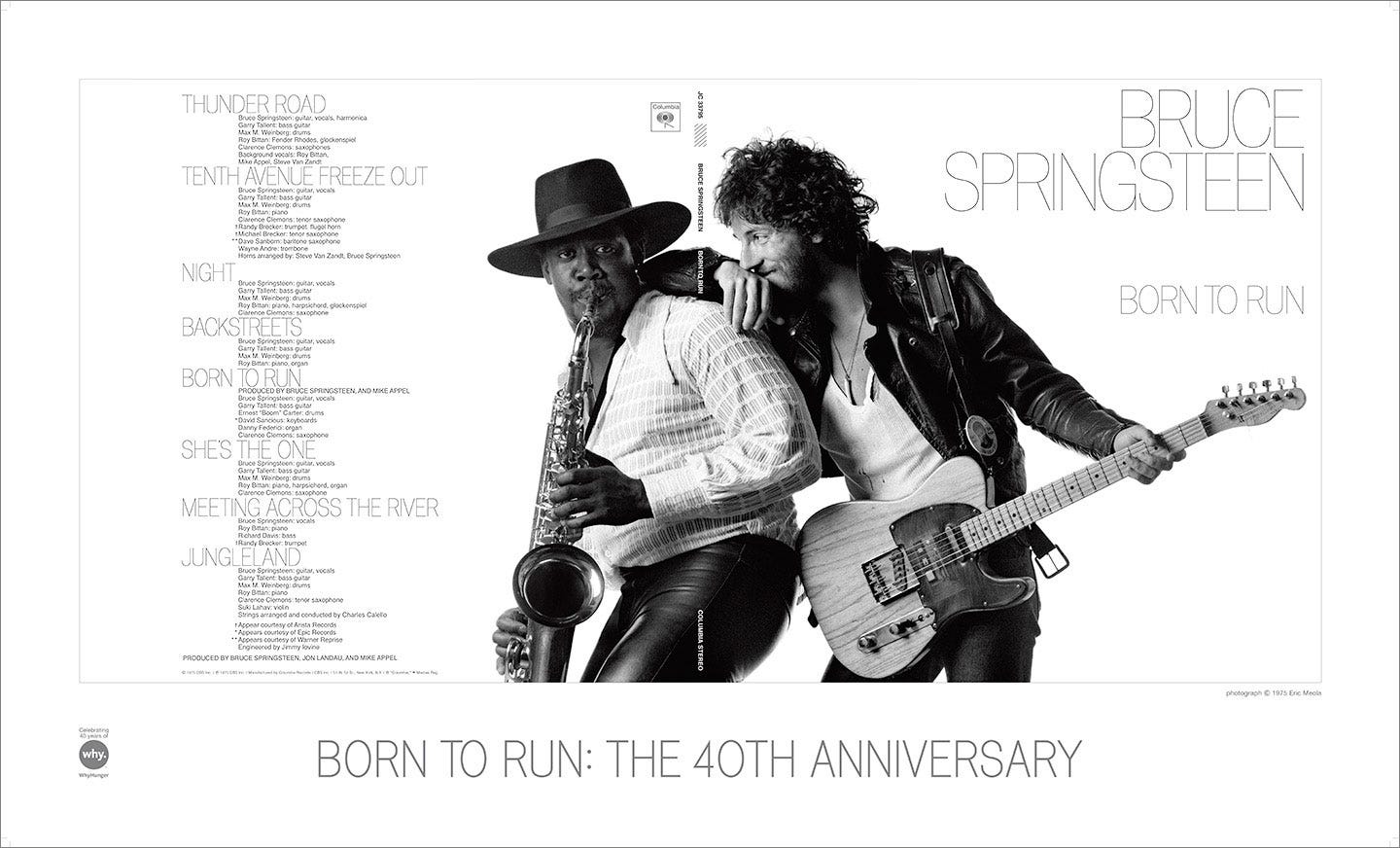













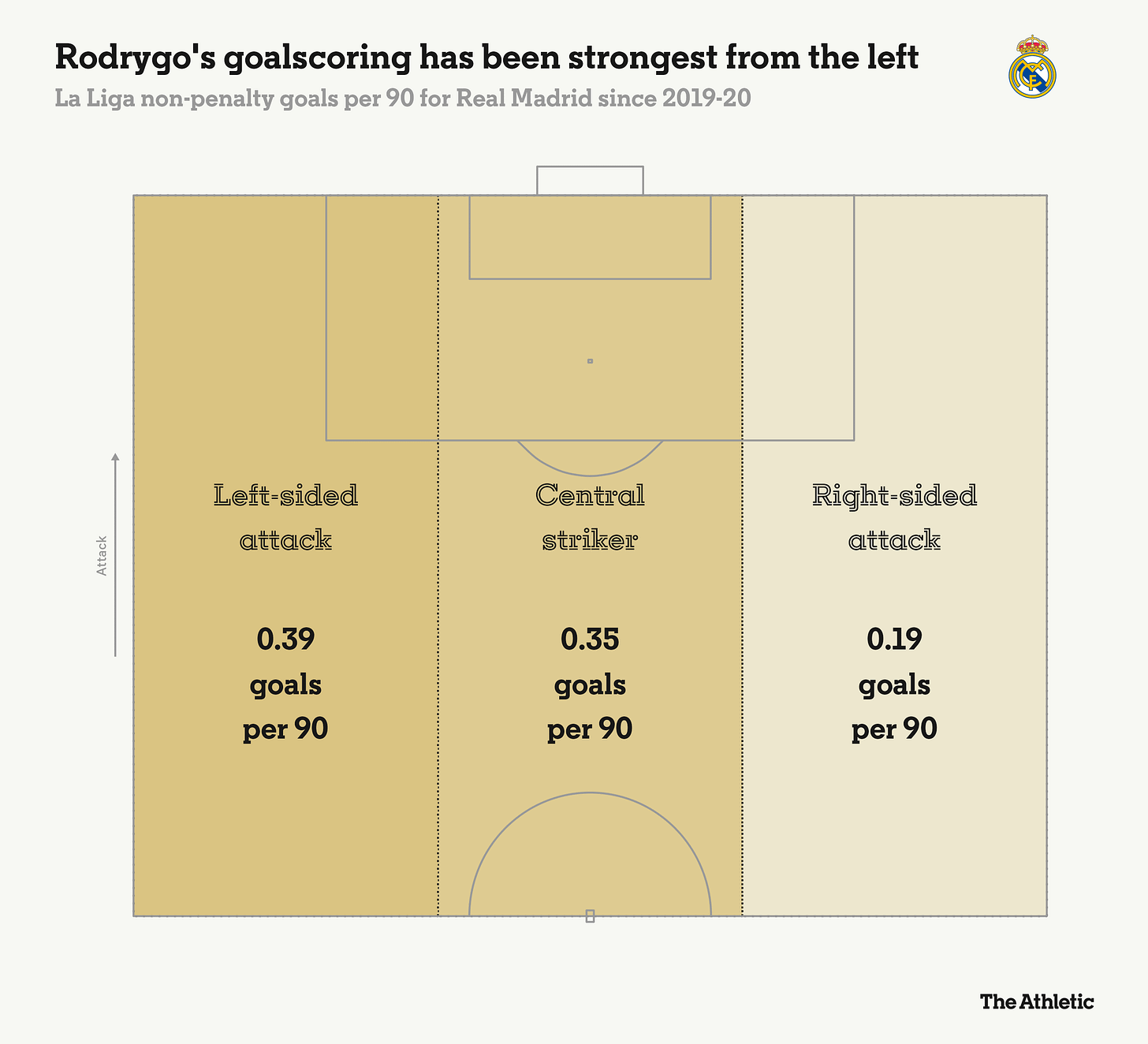
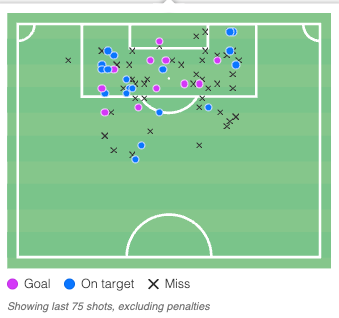






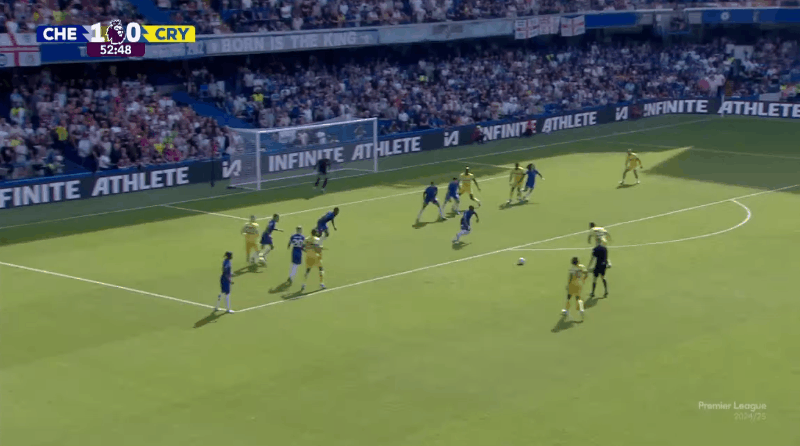





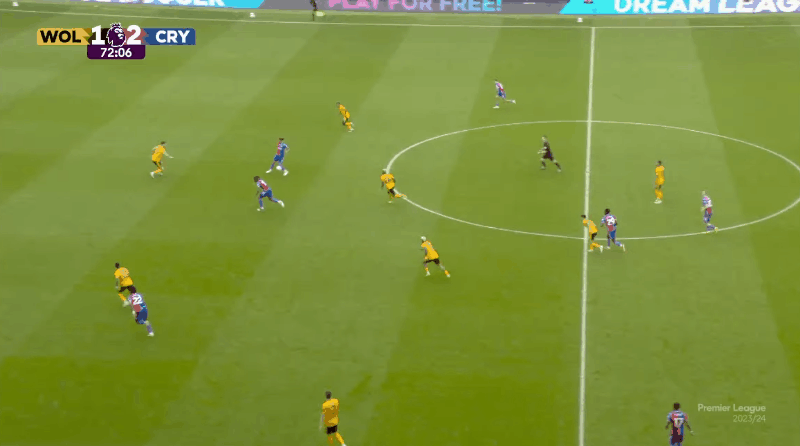





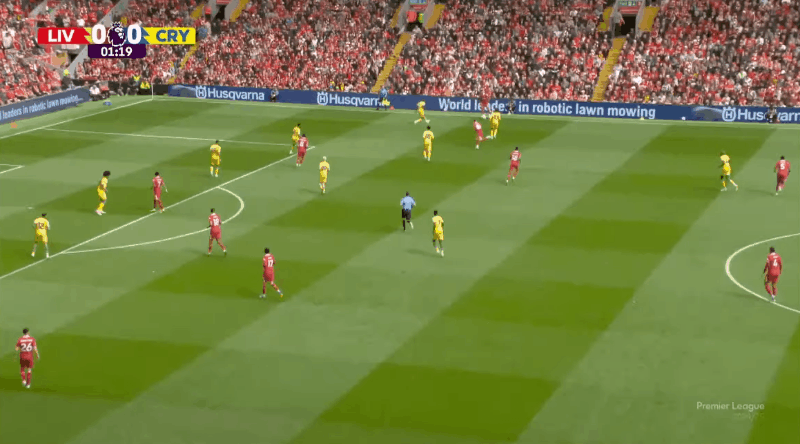

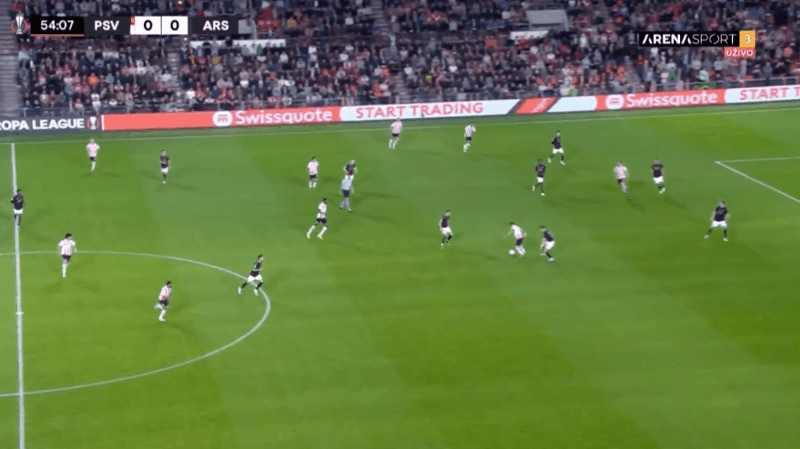

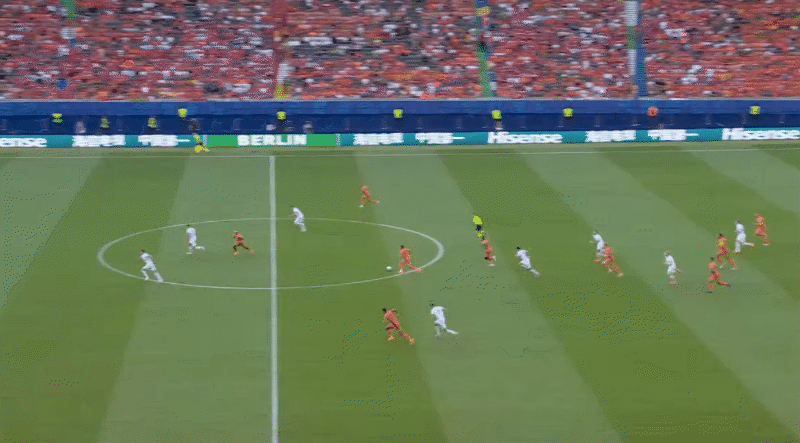



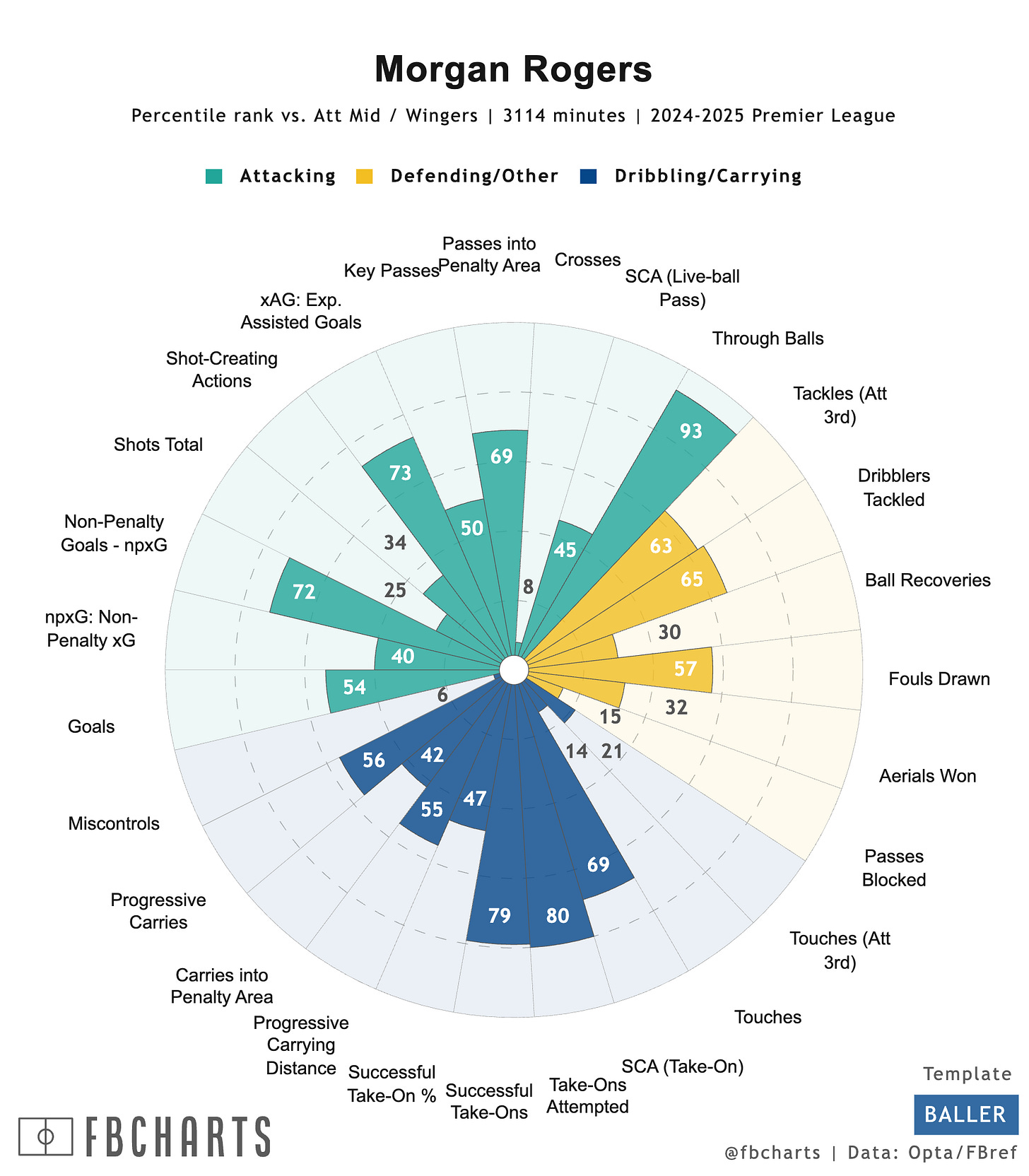
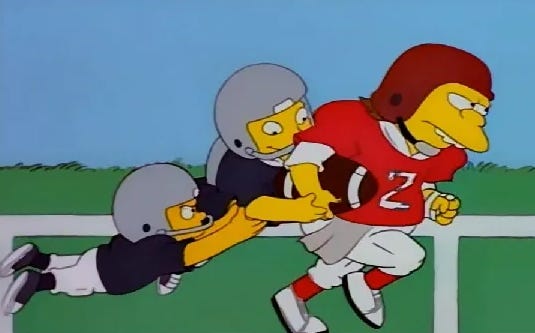

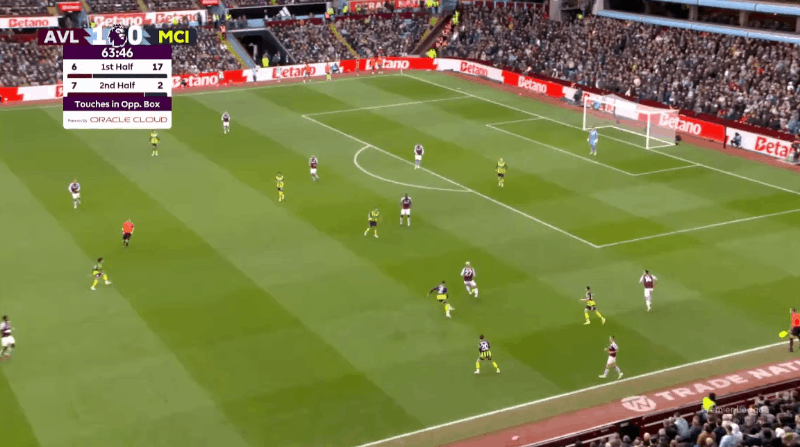
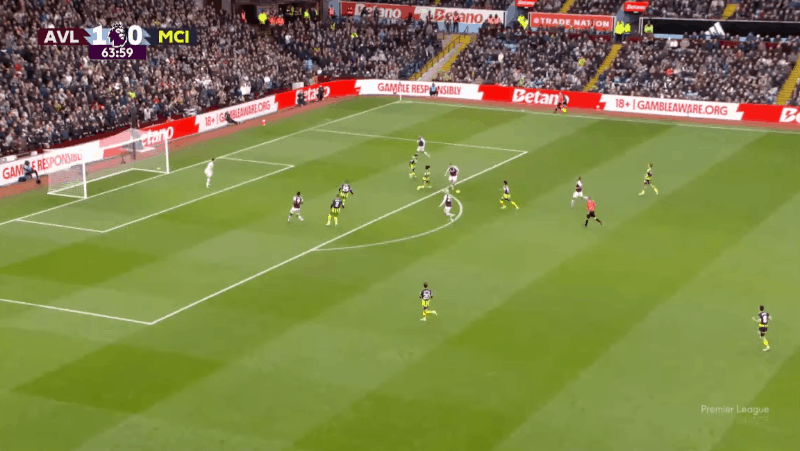






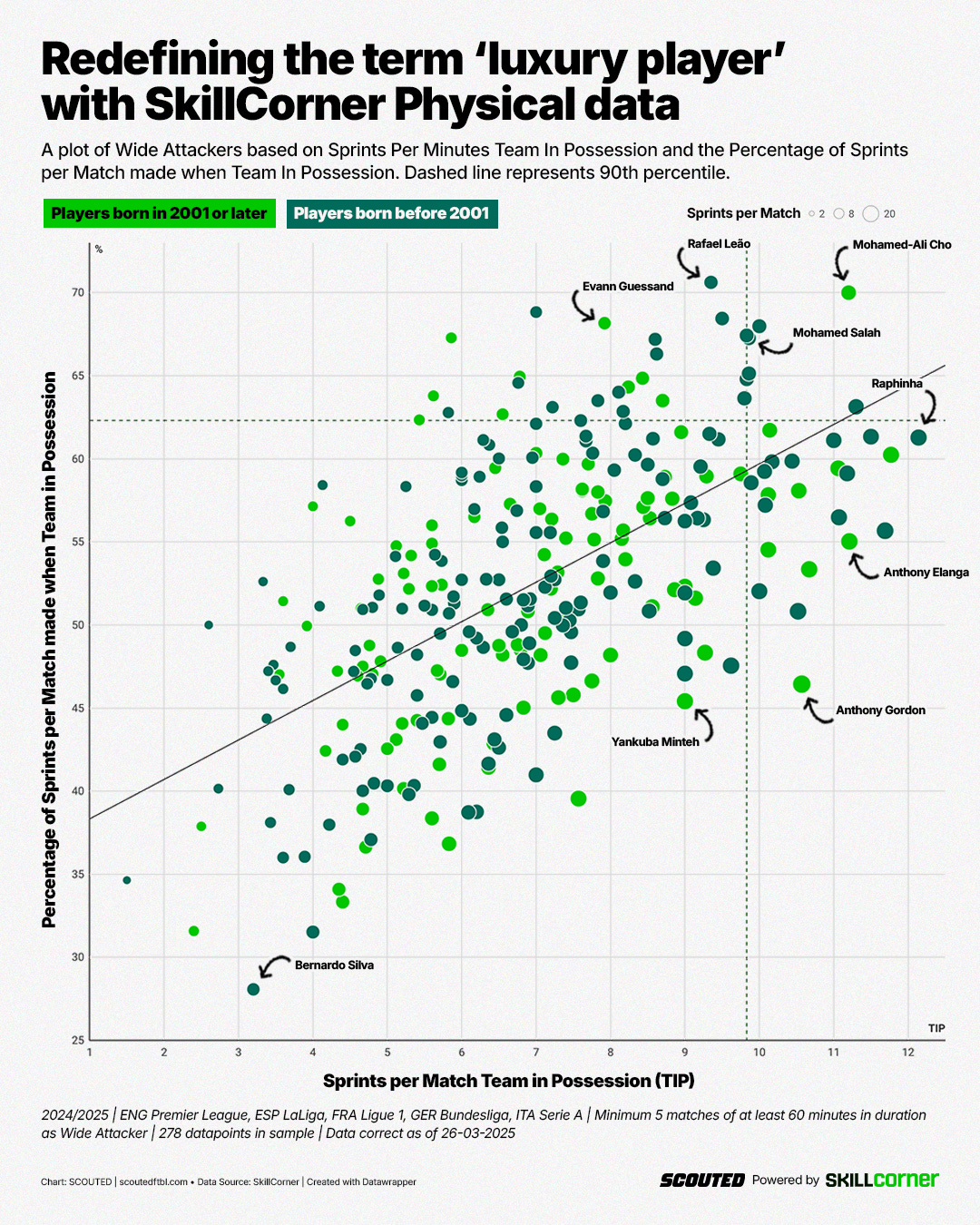




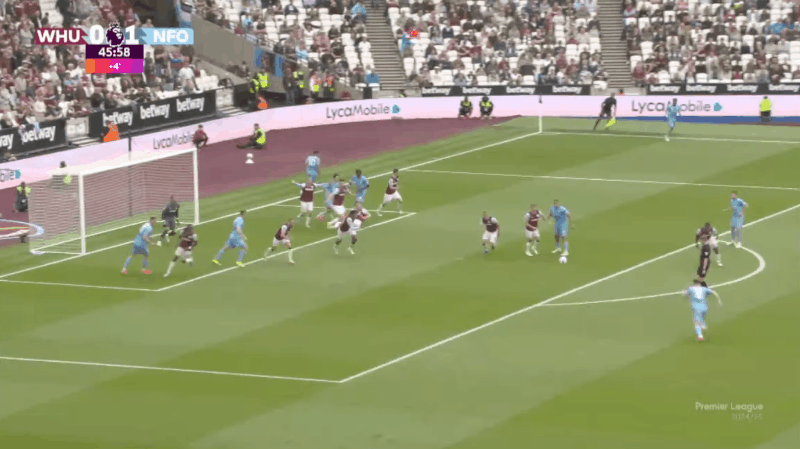
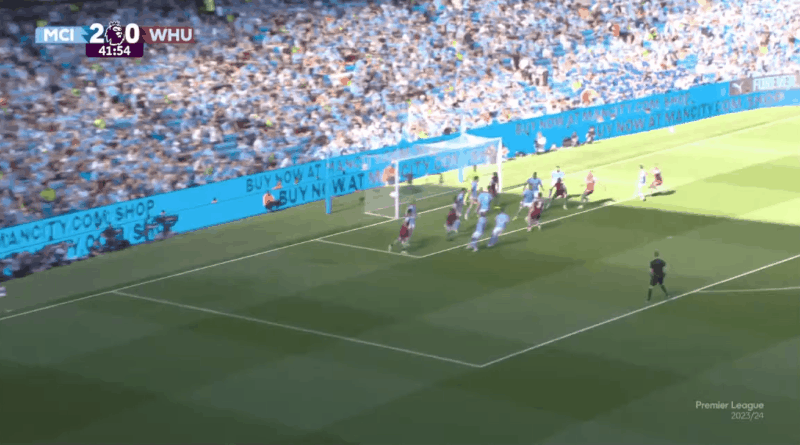



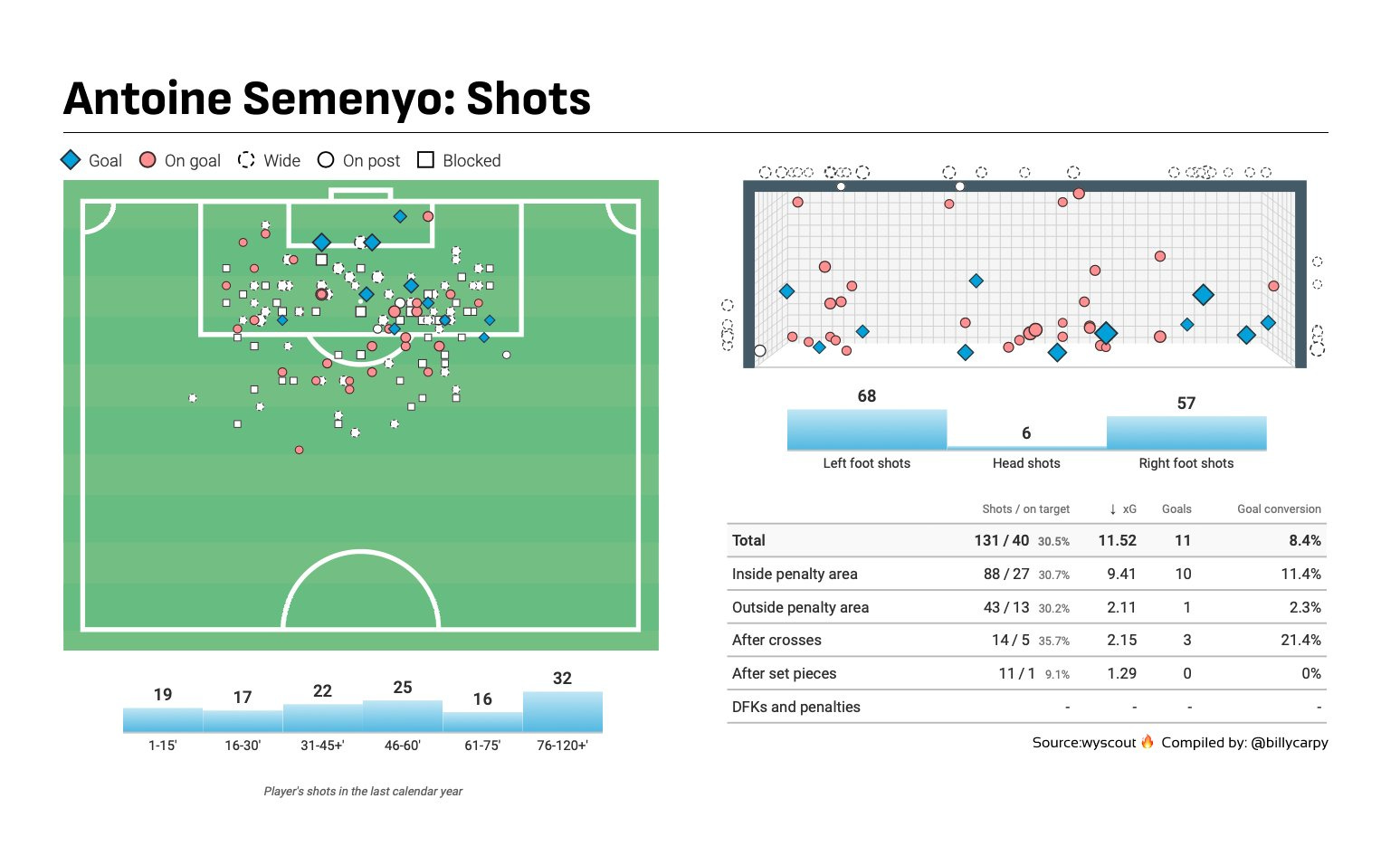
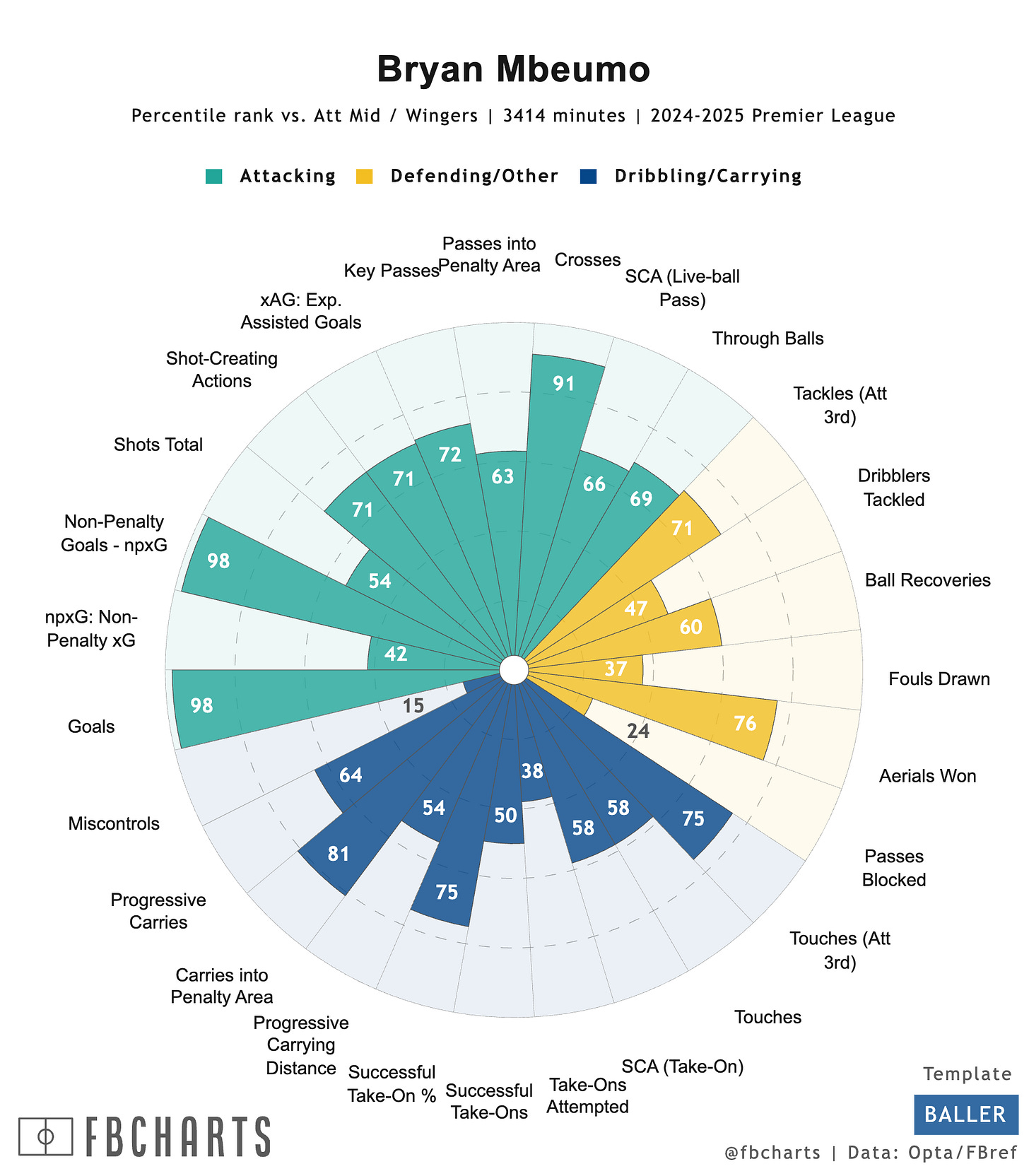





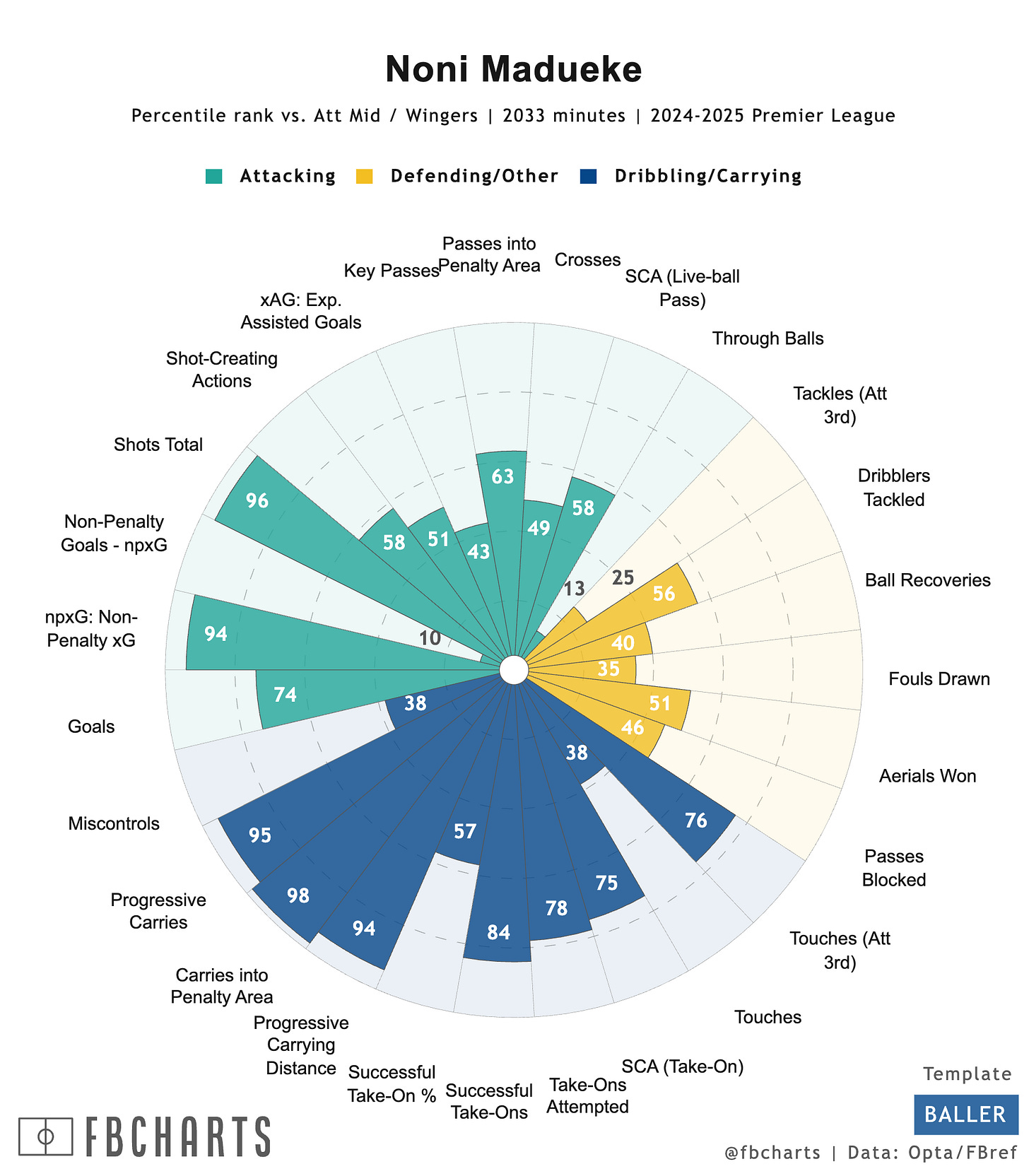


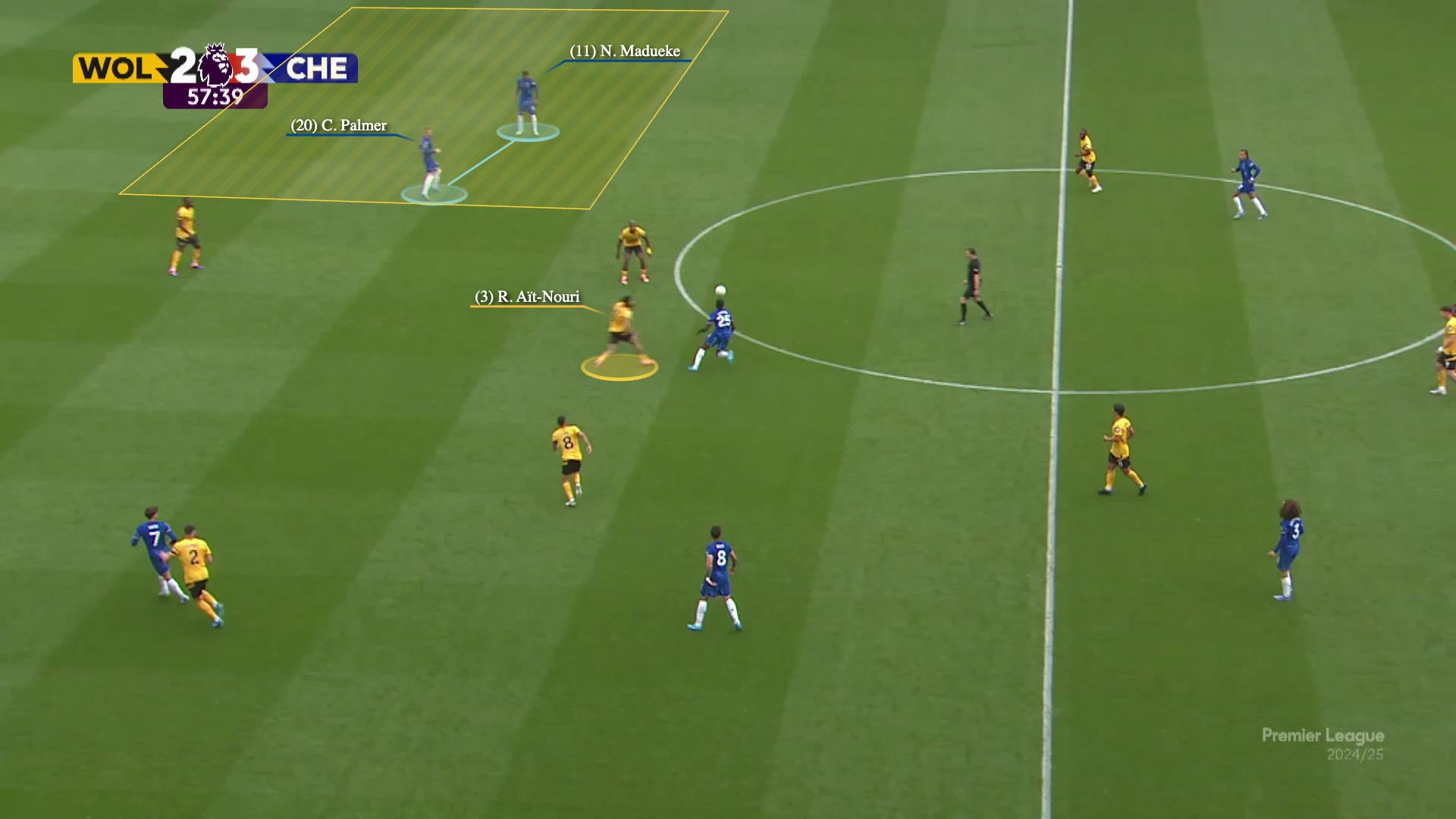





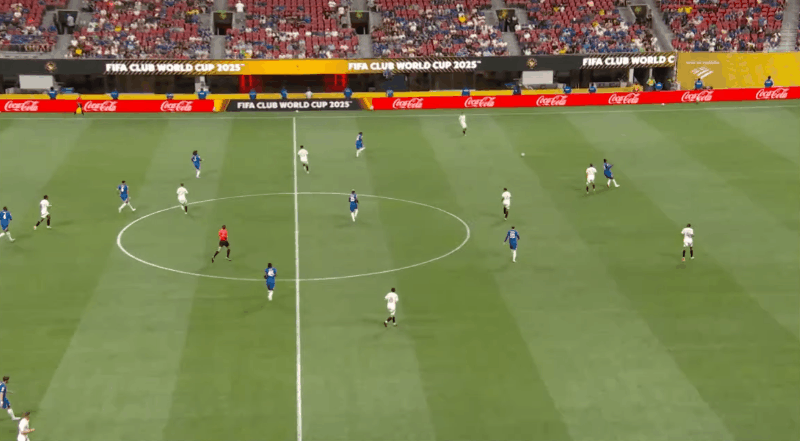

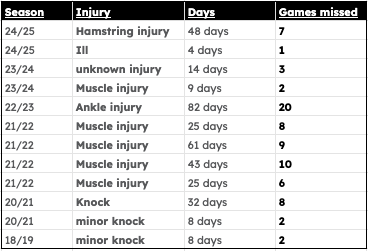

OH BOY, HAVE I BEEN WAITING FOR THIS
Thank you very much, Billy. Super grateful!
Excellent piece as always Billy. One small q: how long did you spend trying to come up with a name for the ranking metric and what were the frontrunners before you gave up?